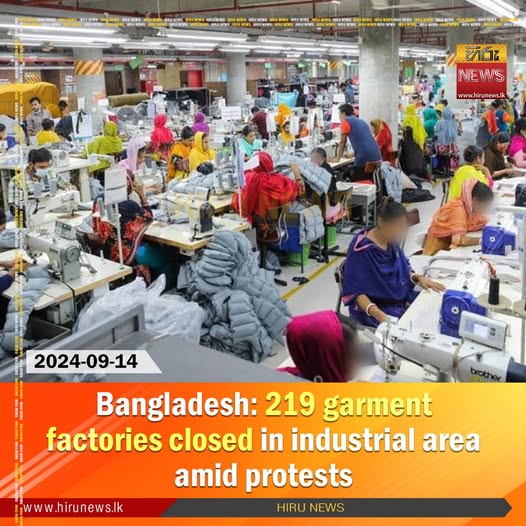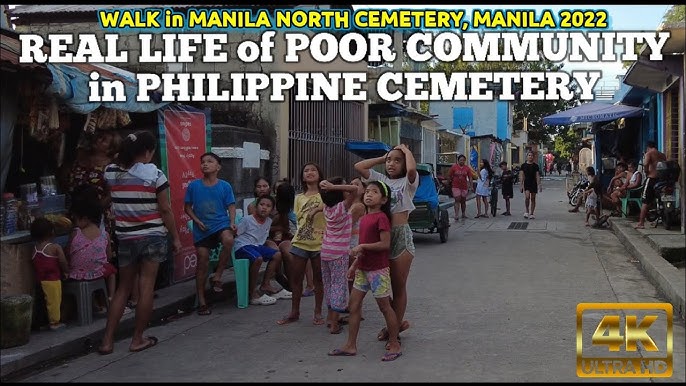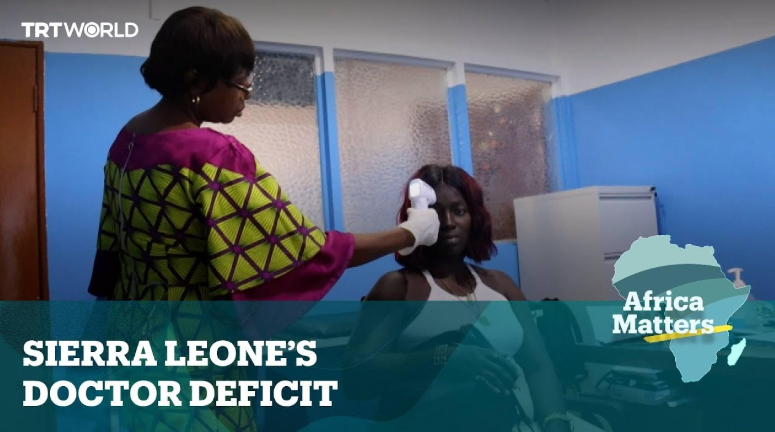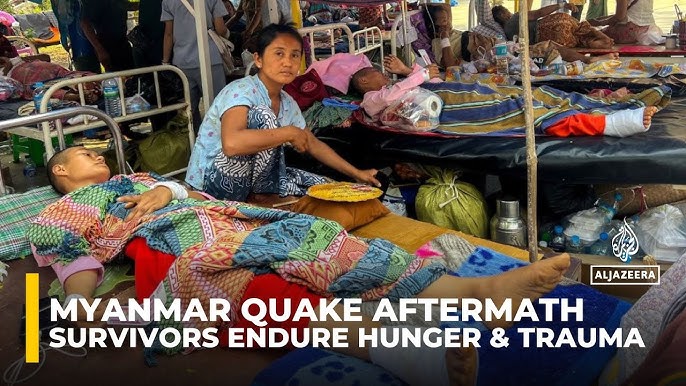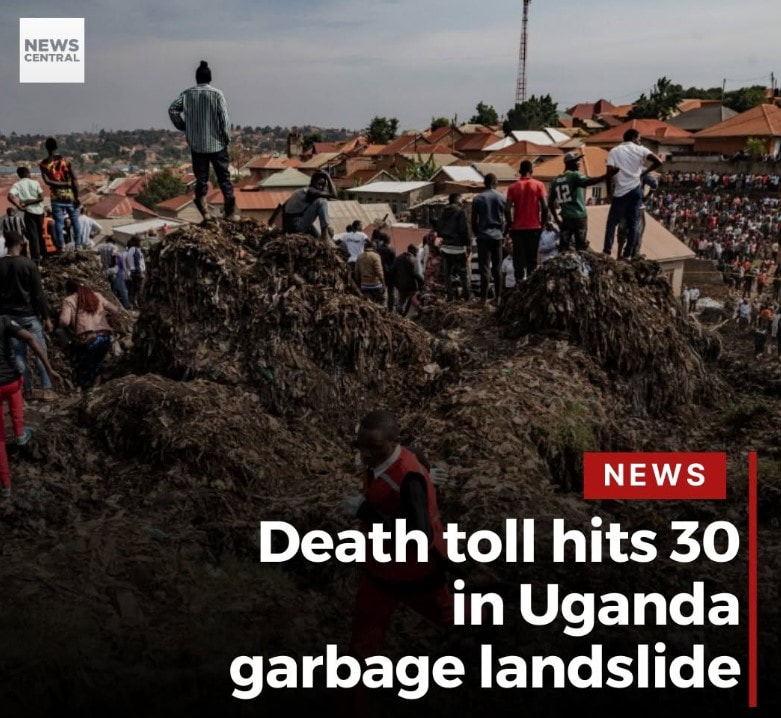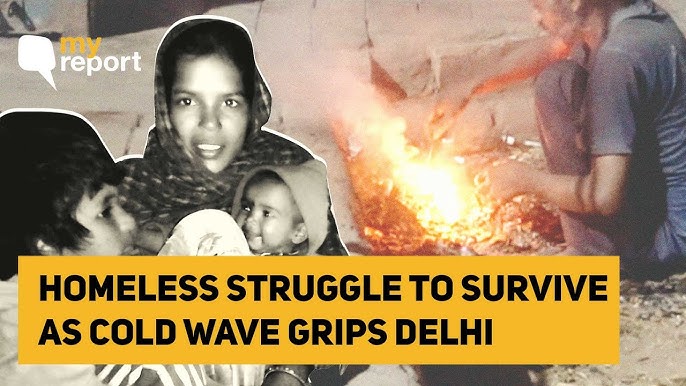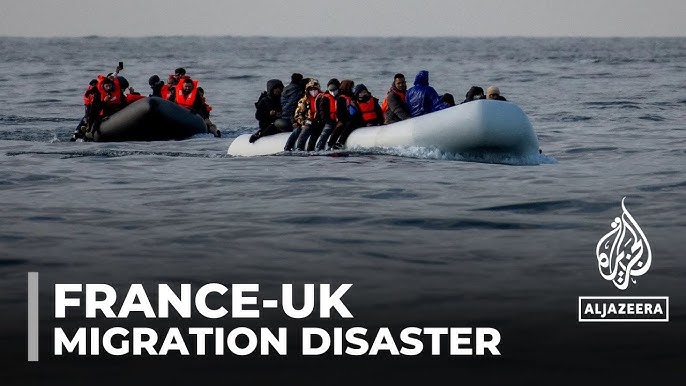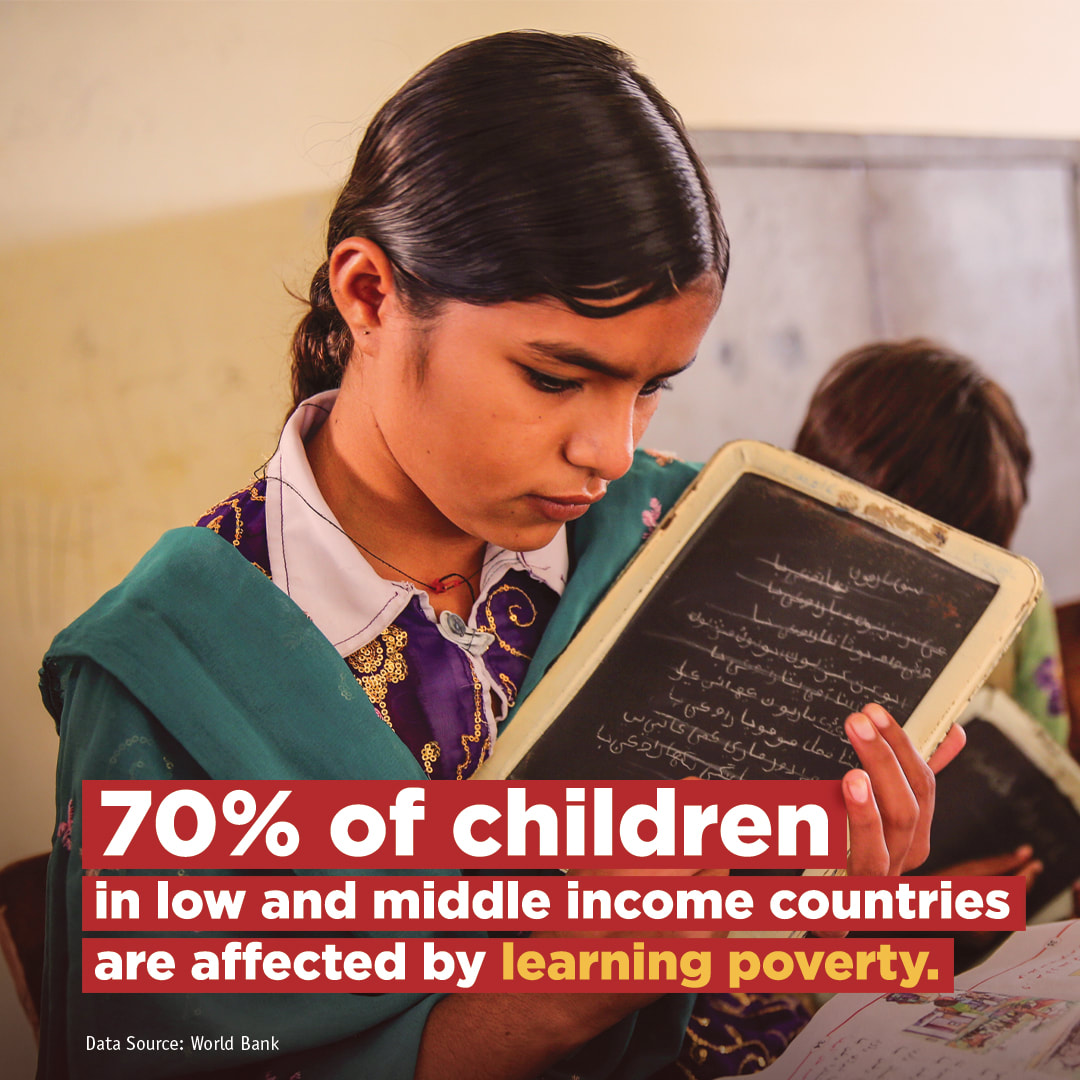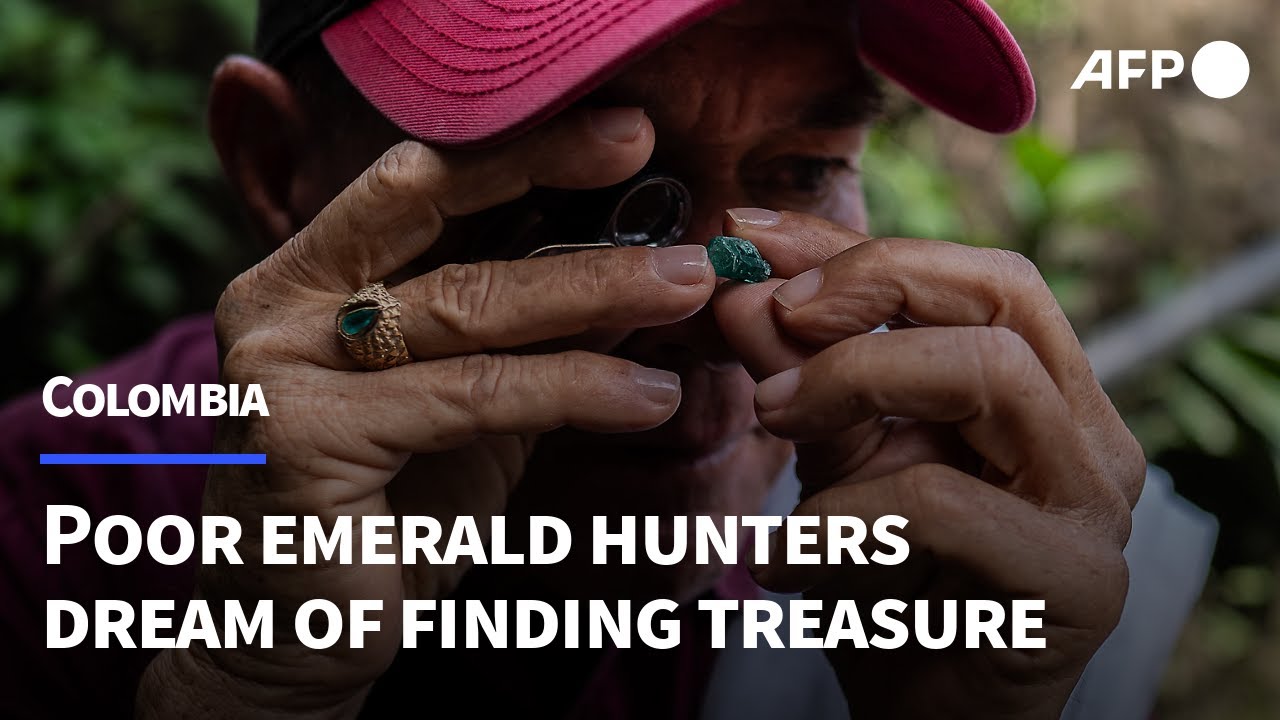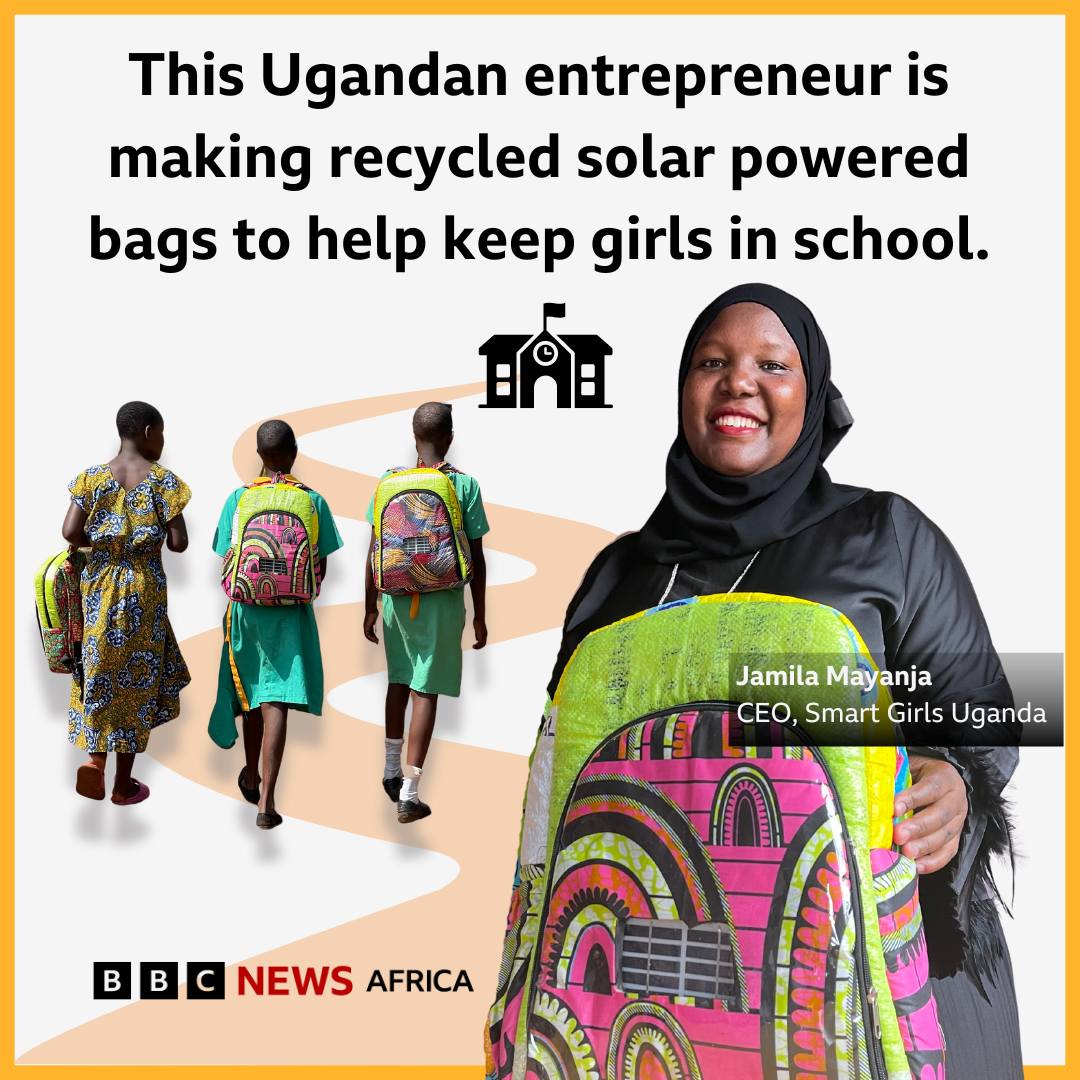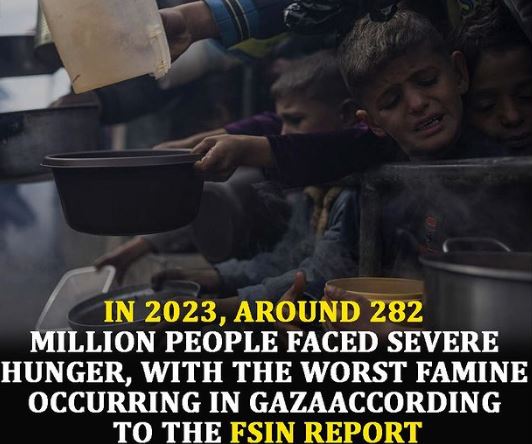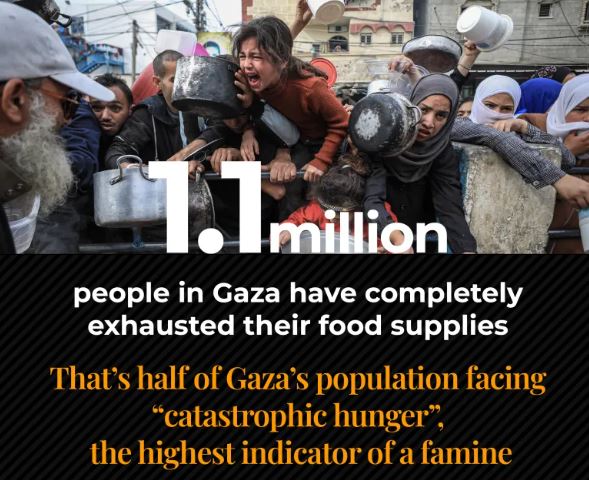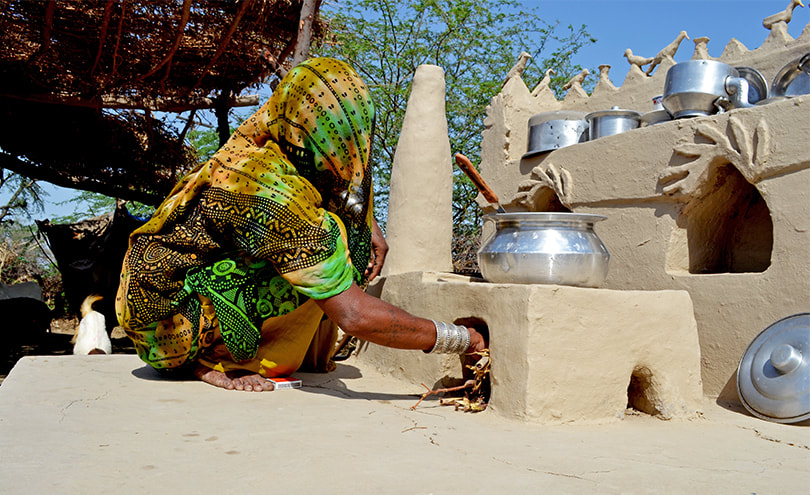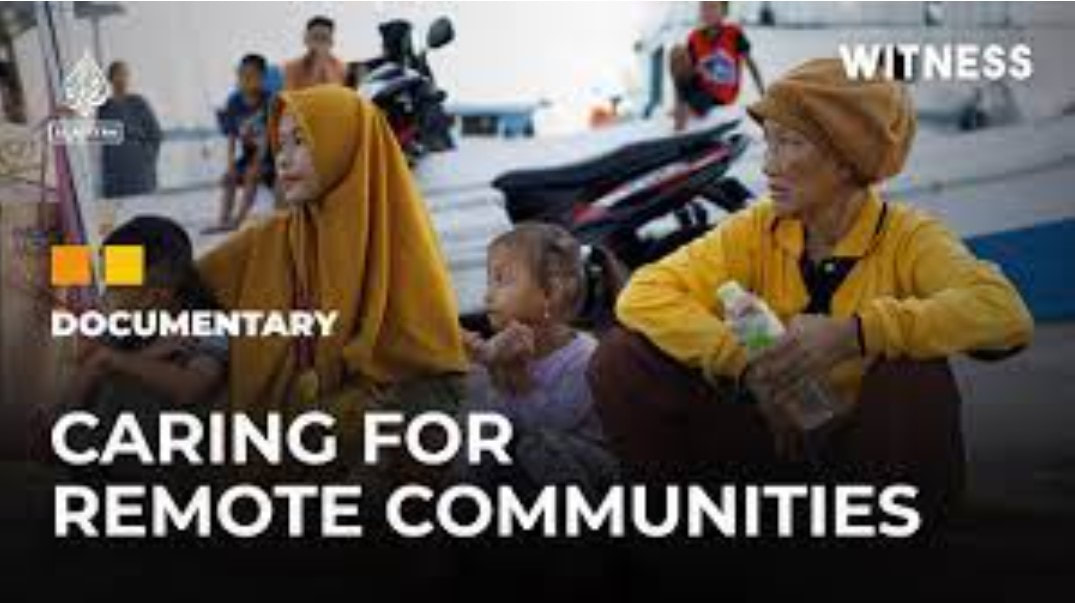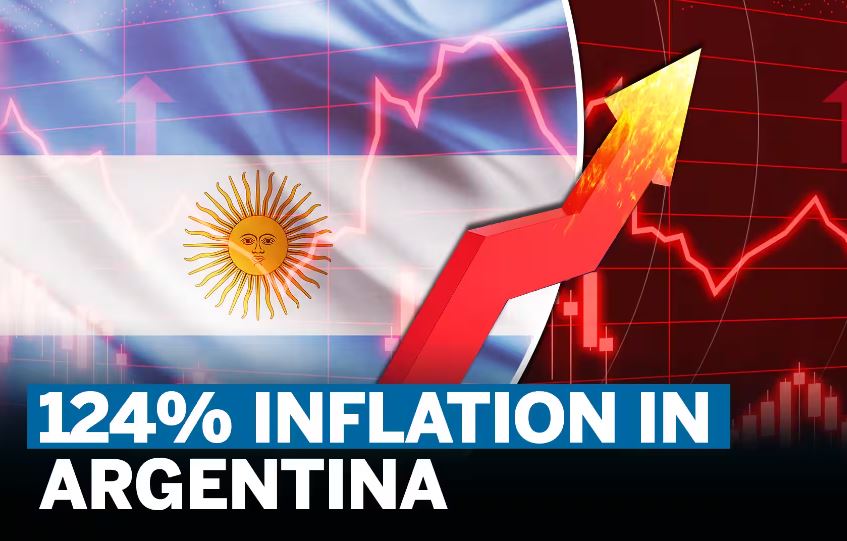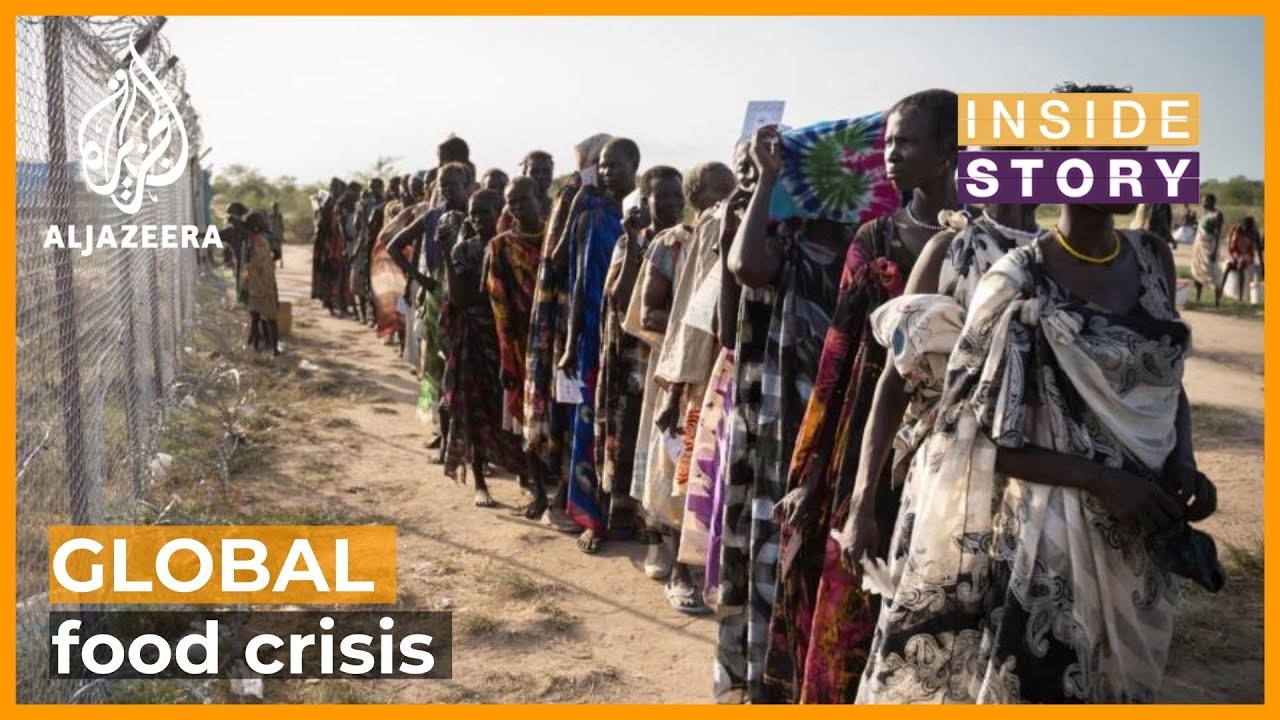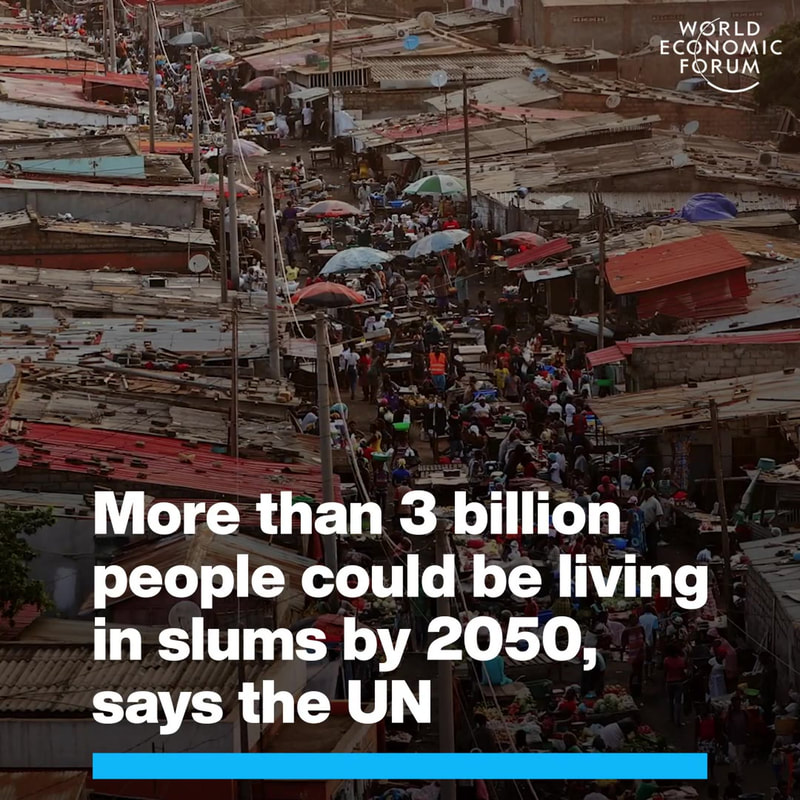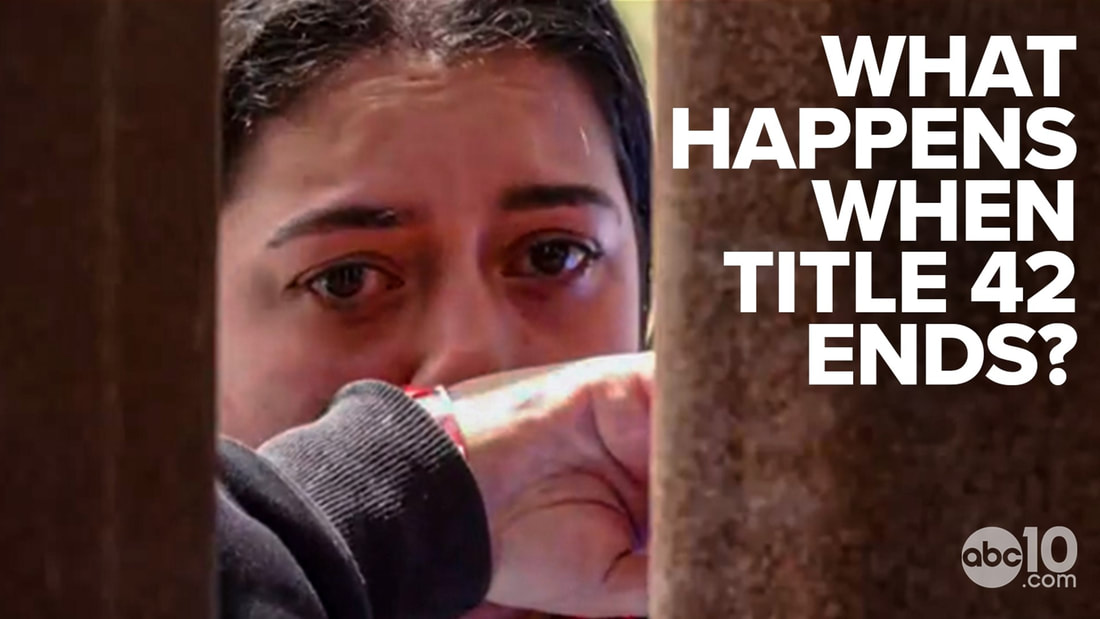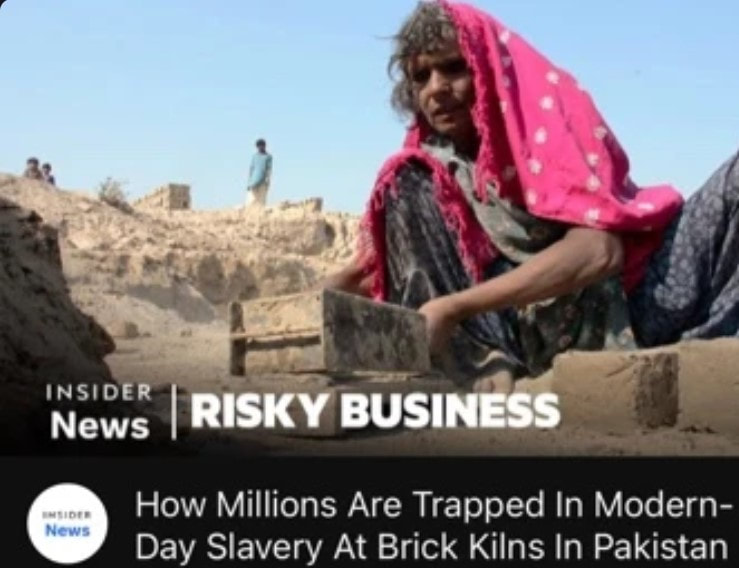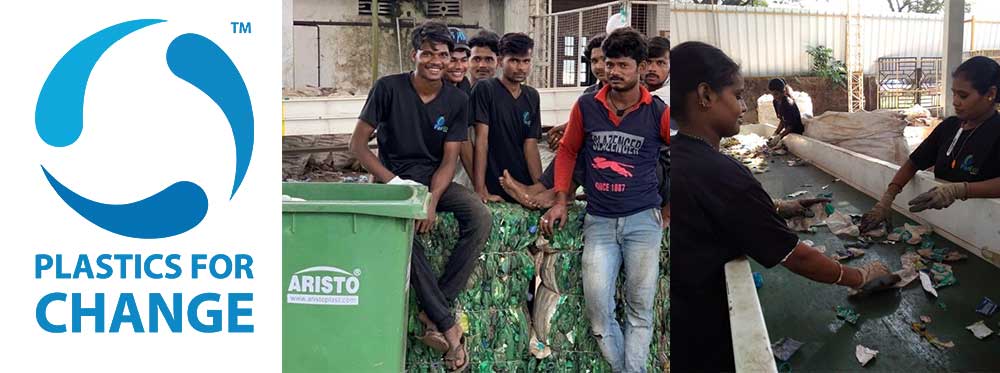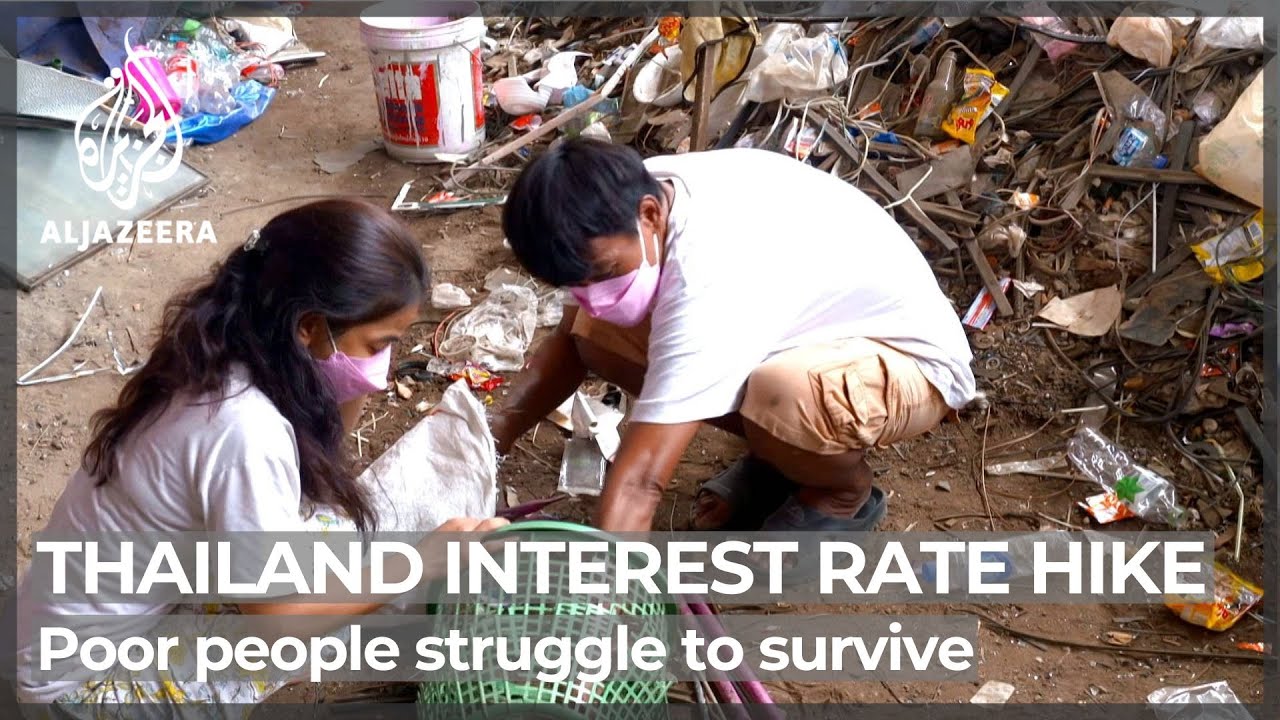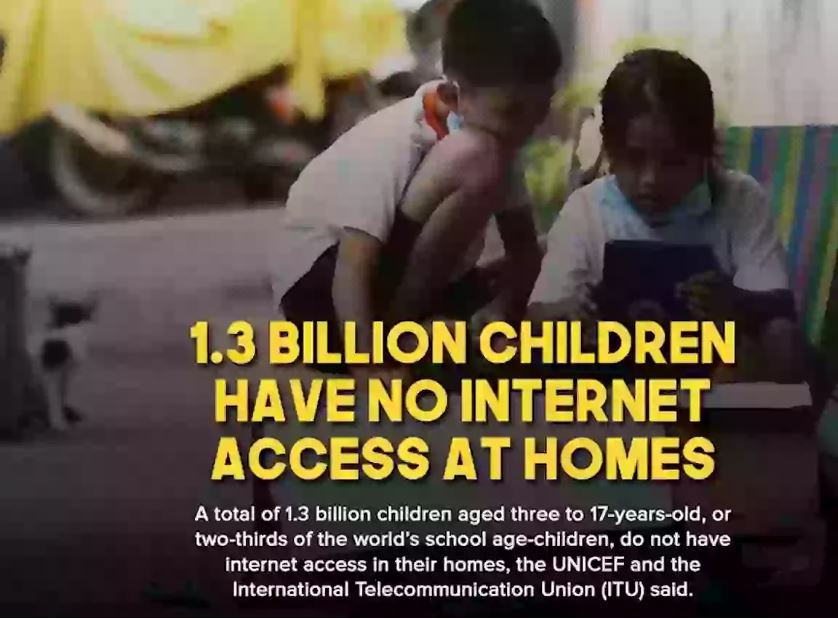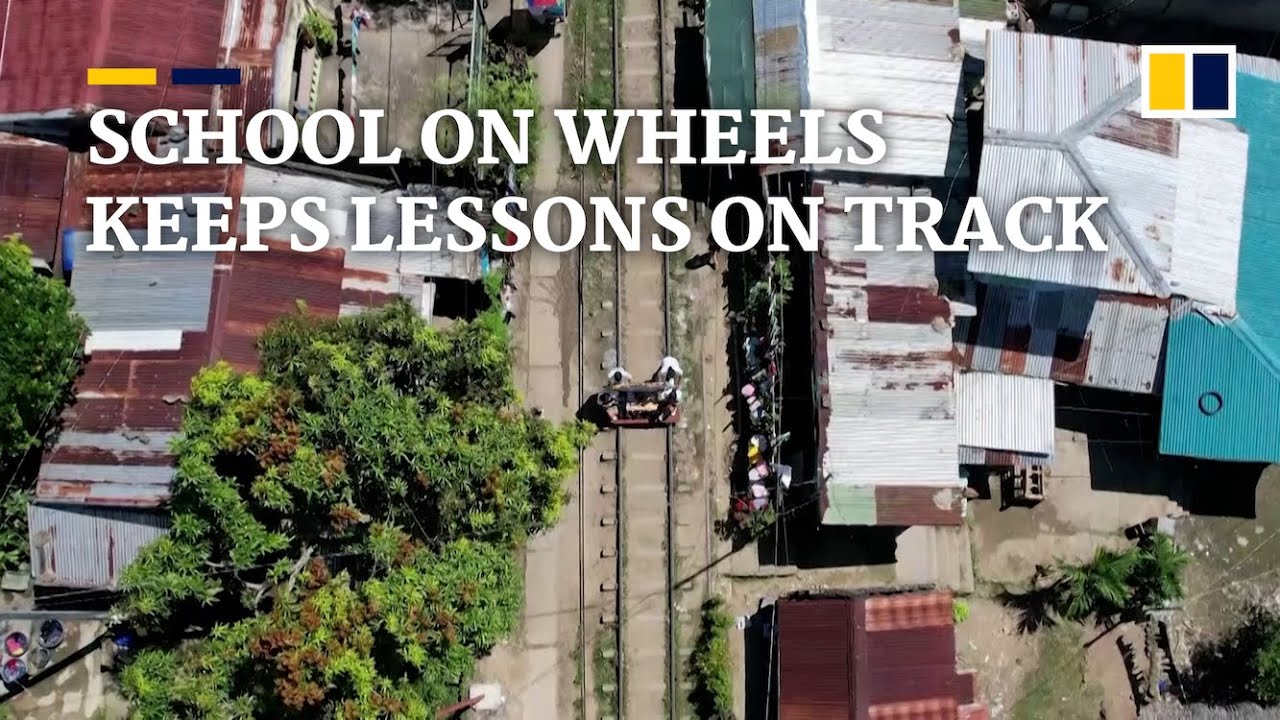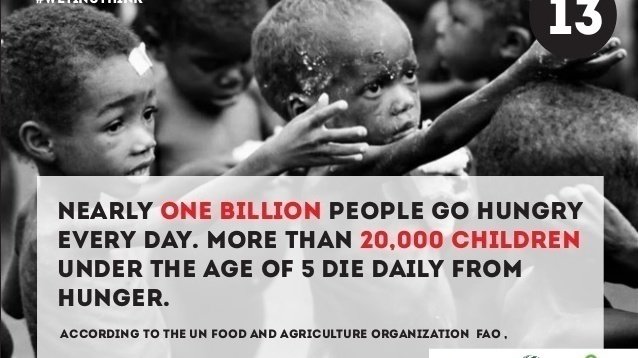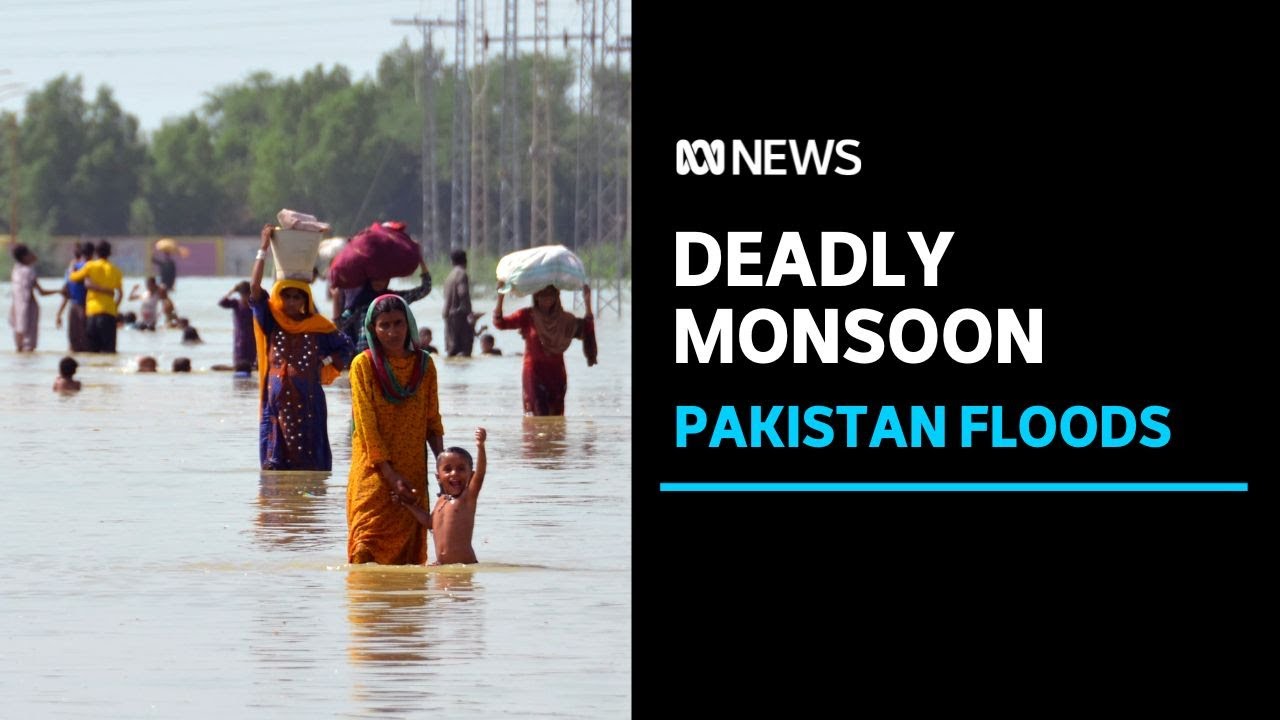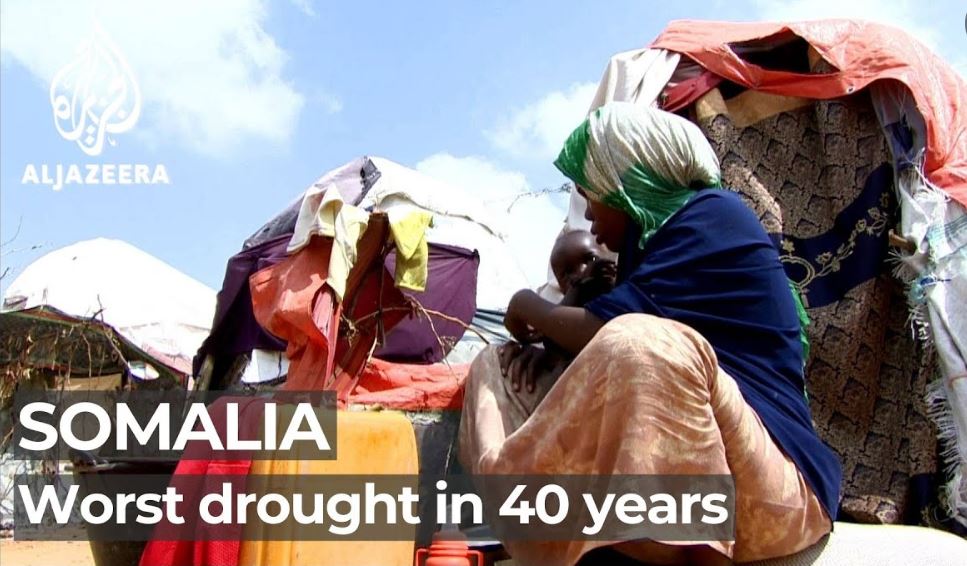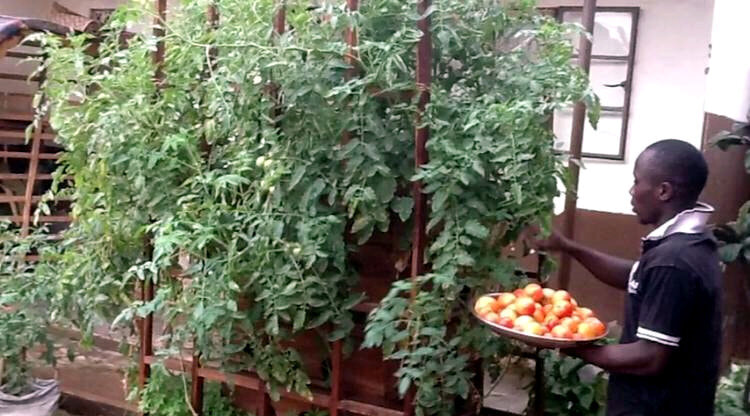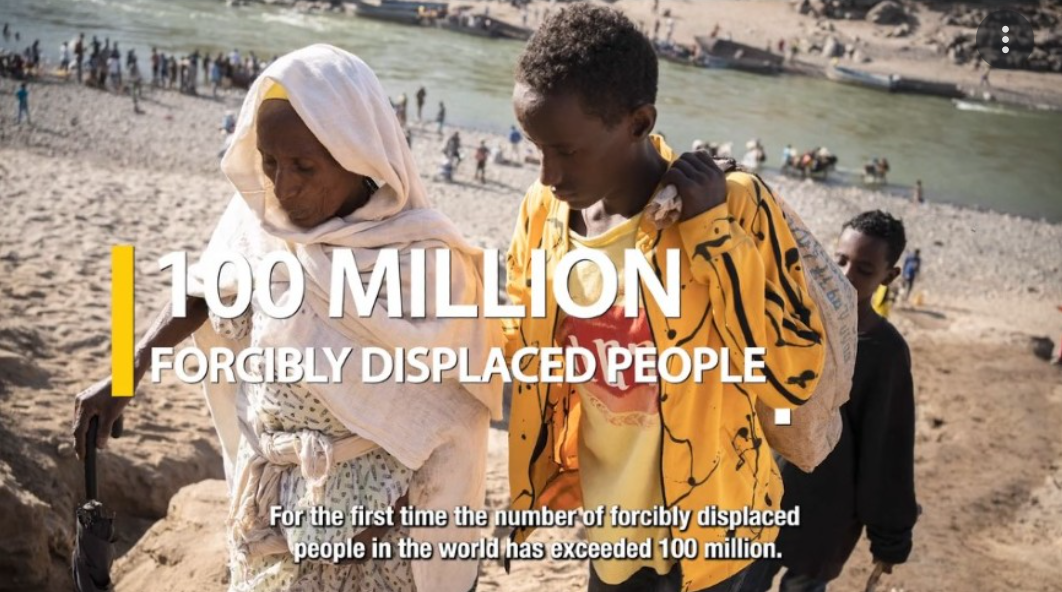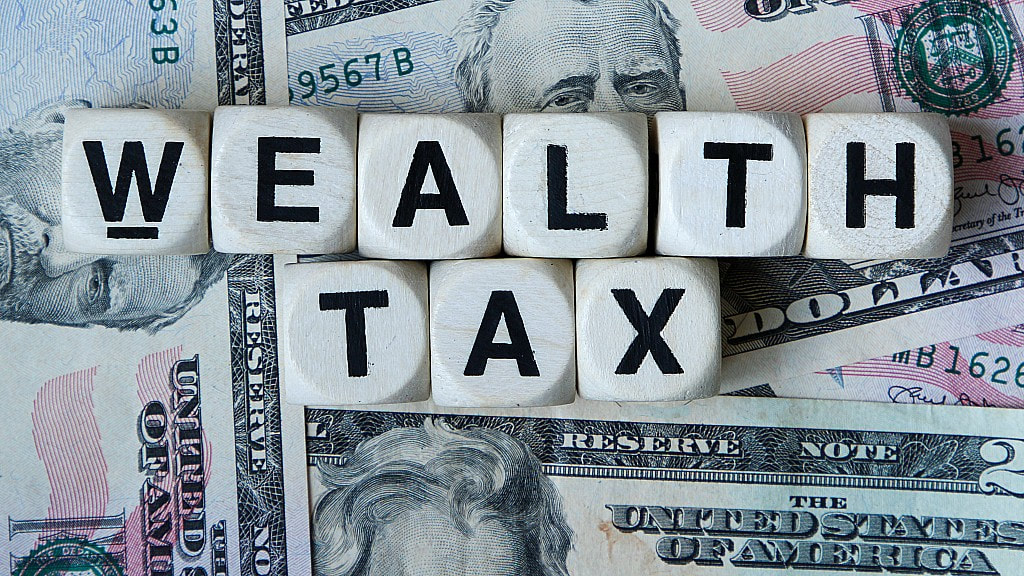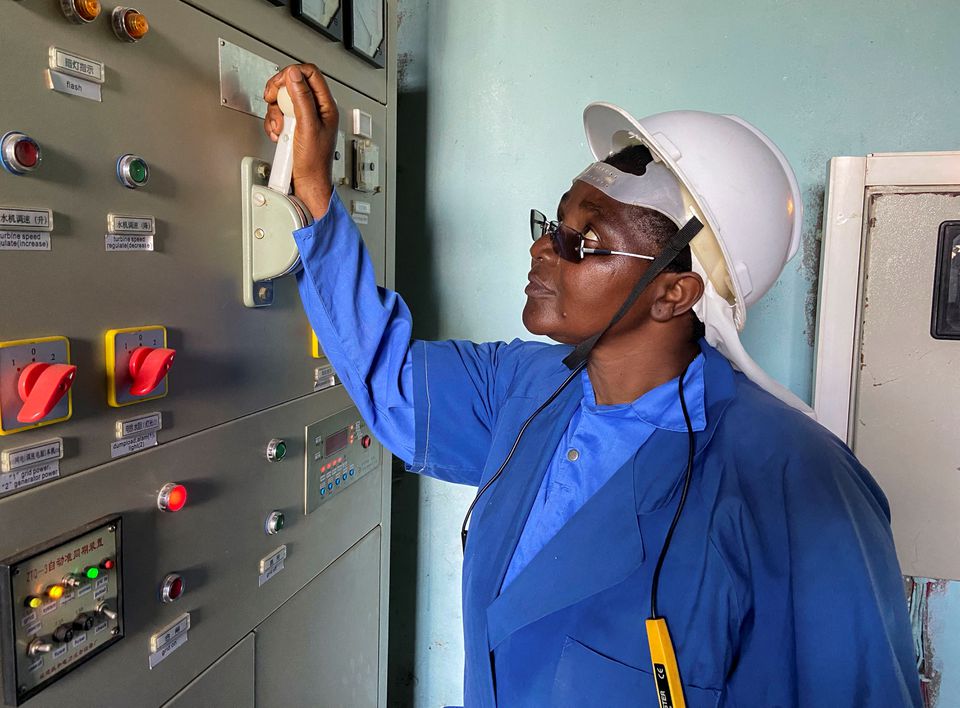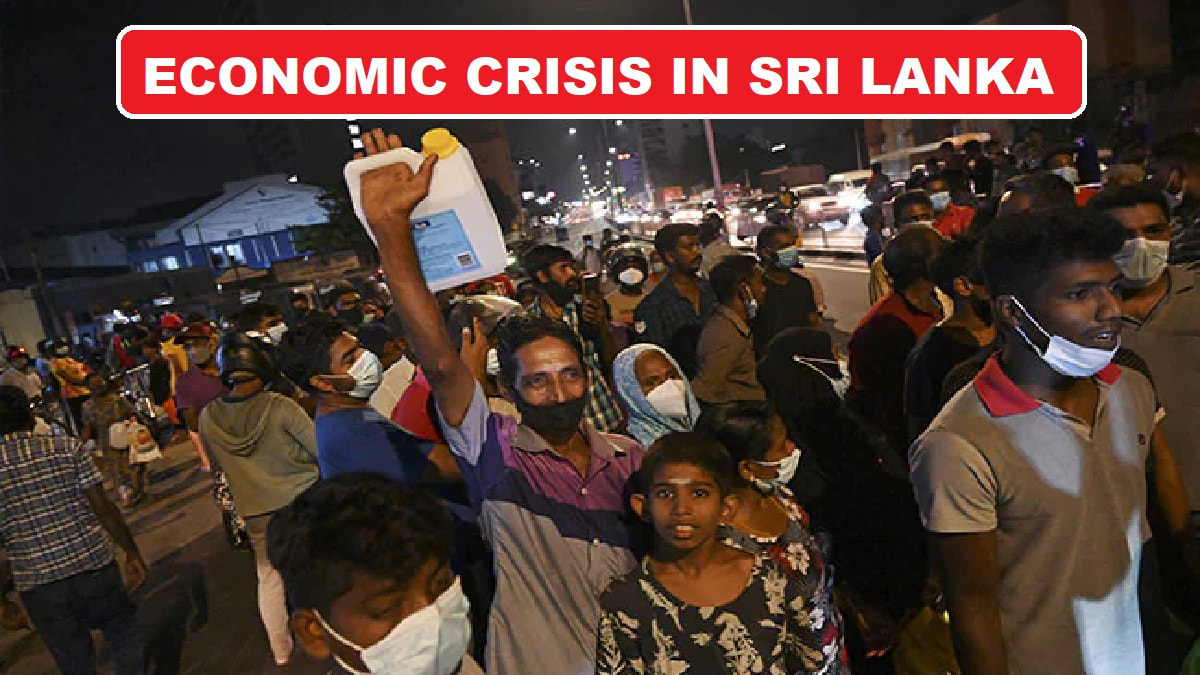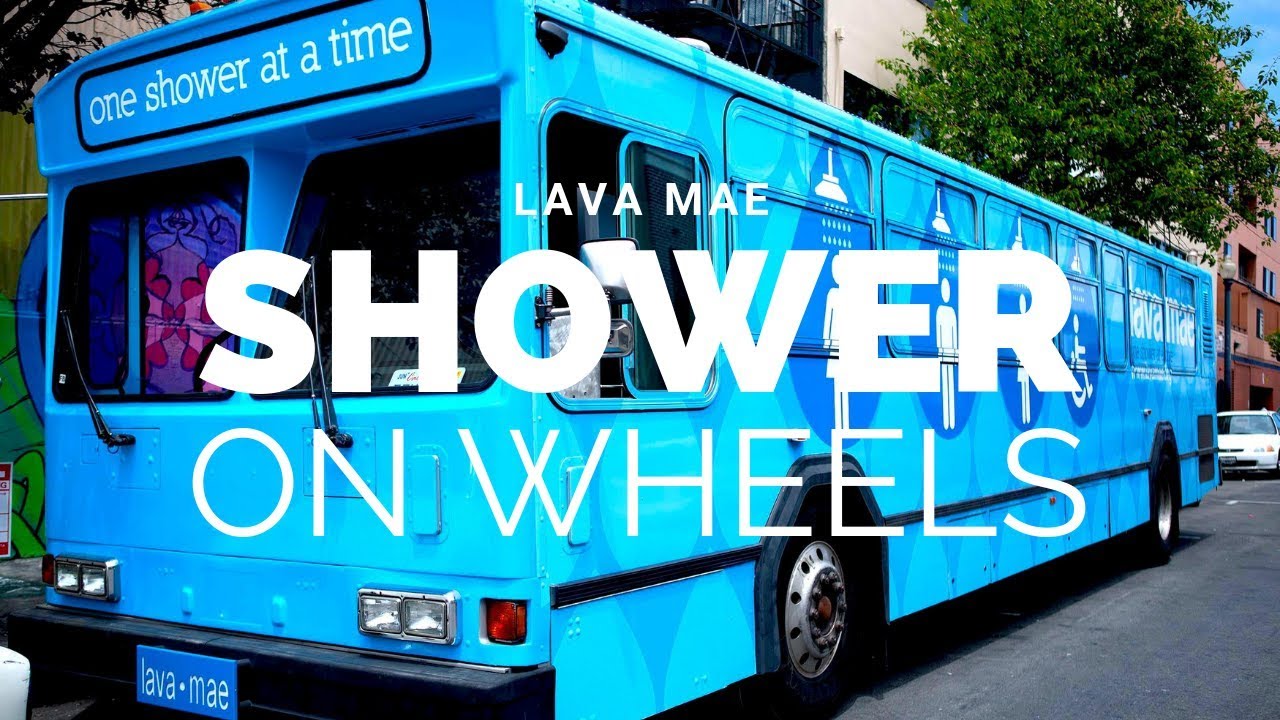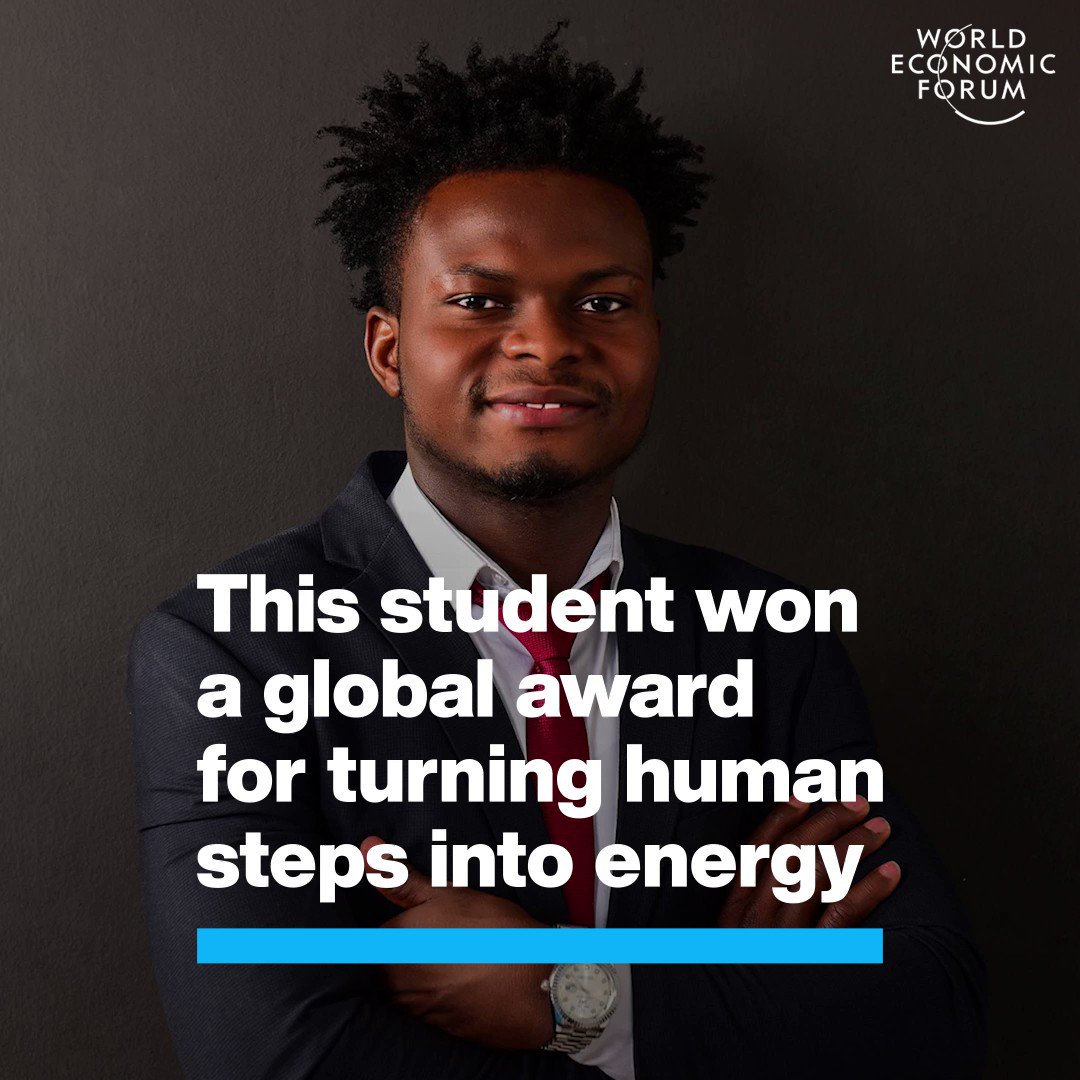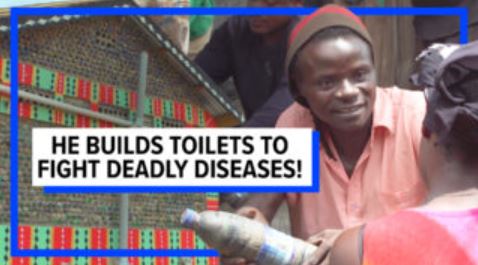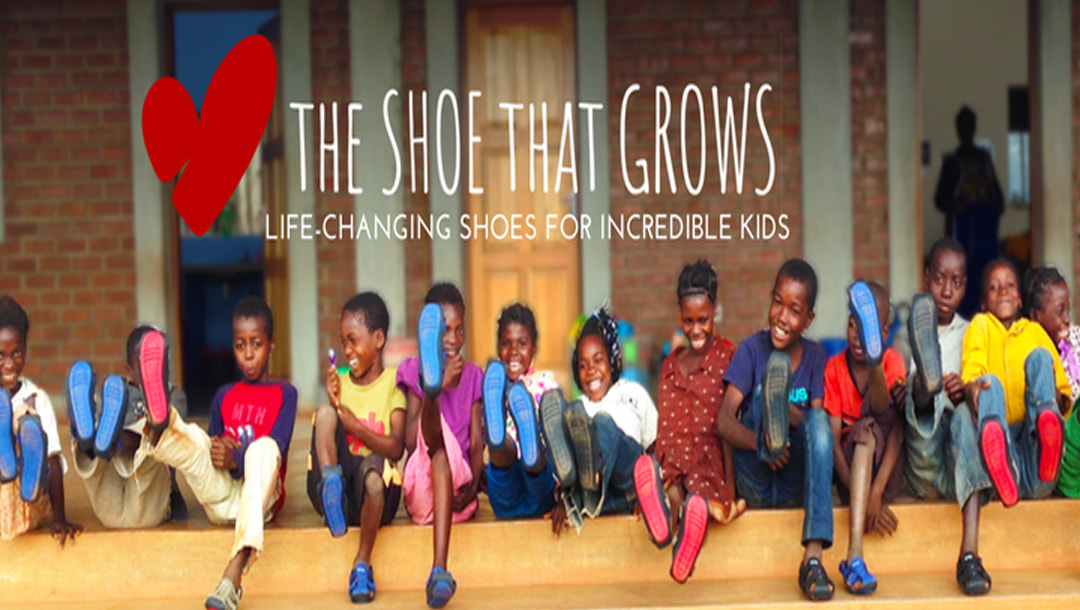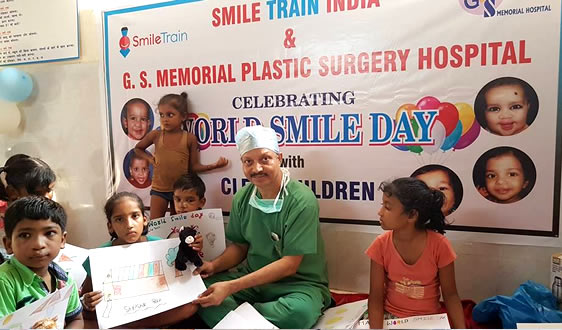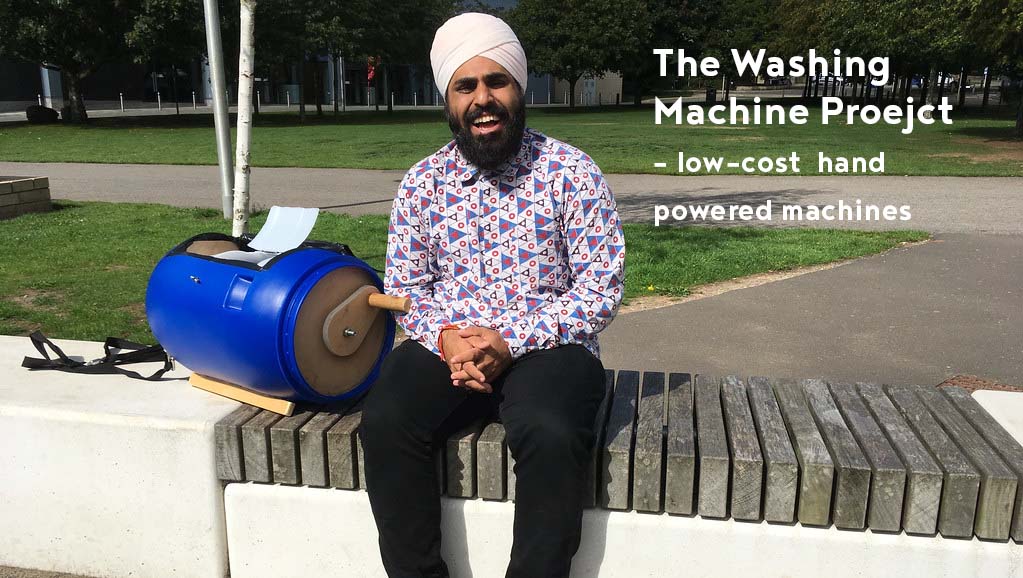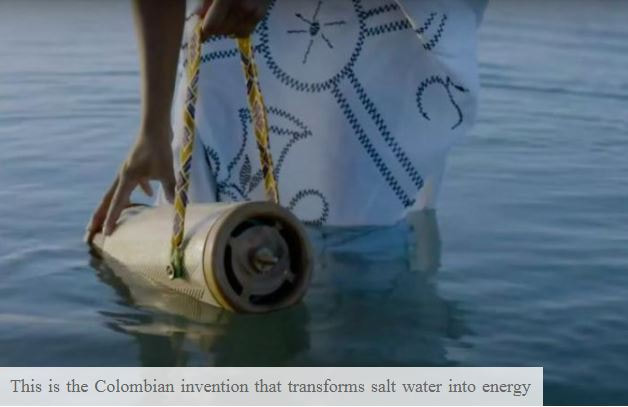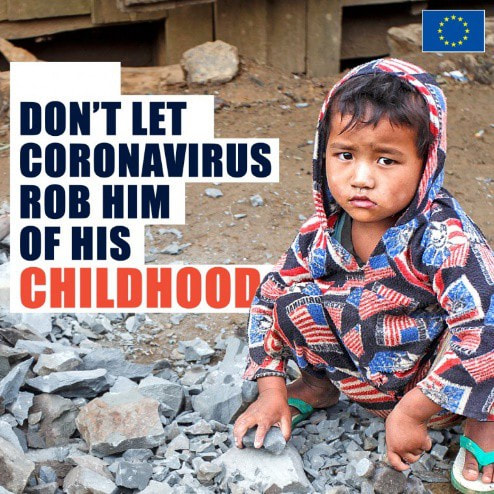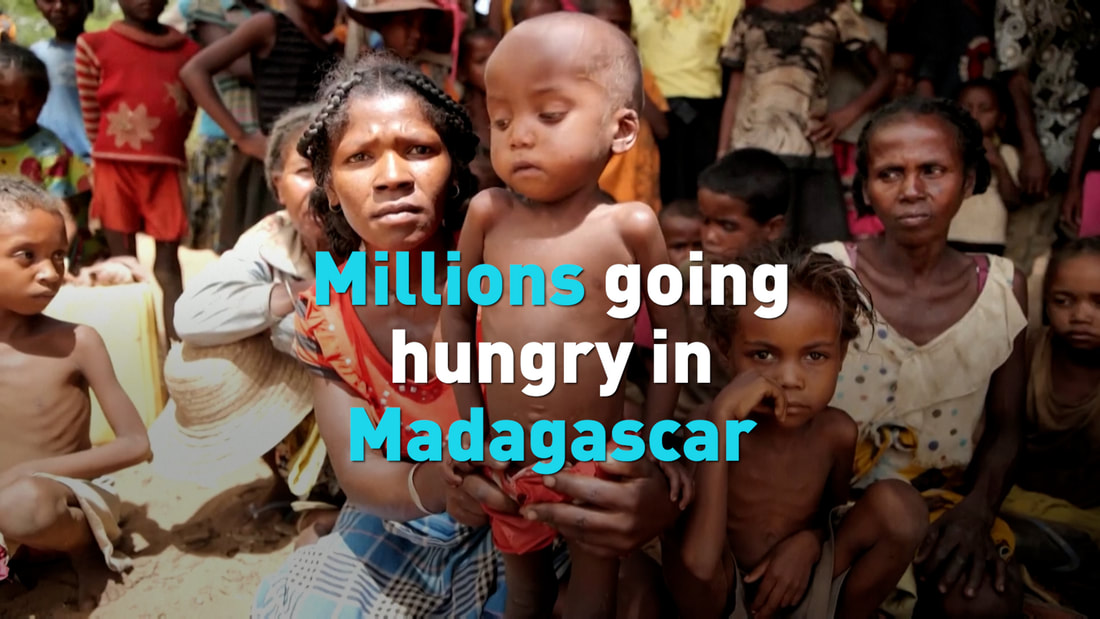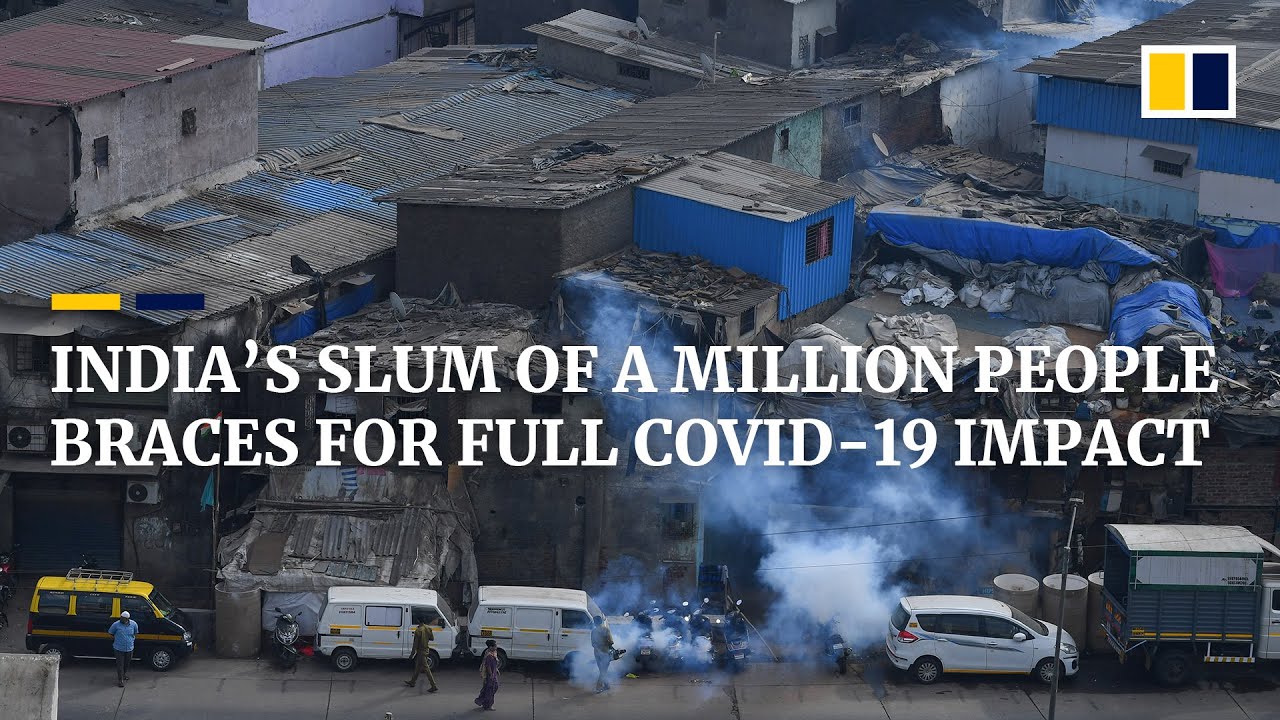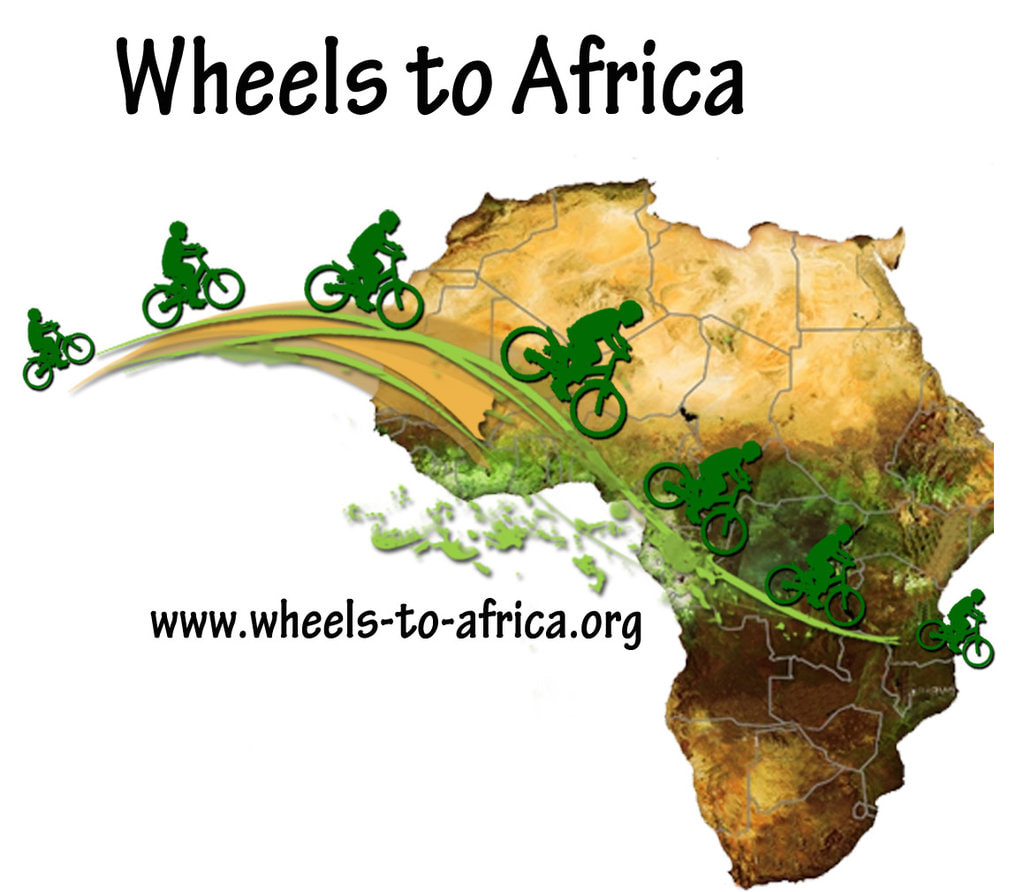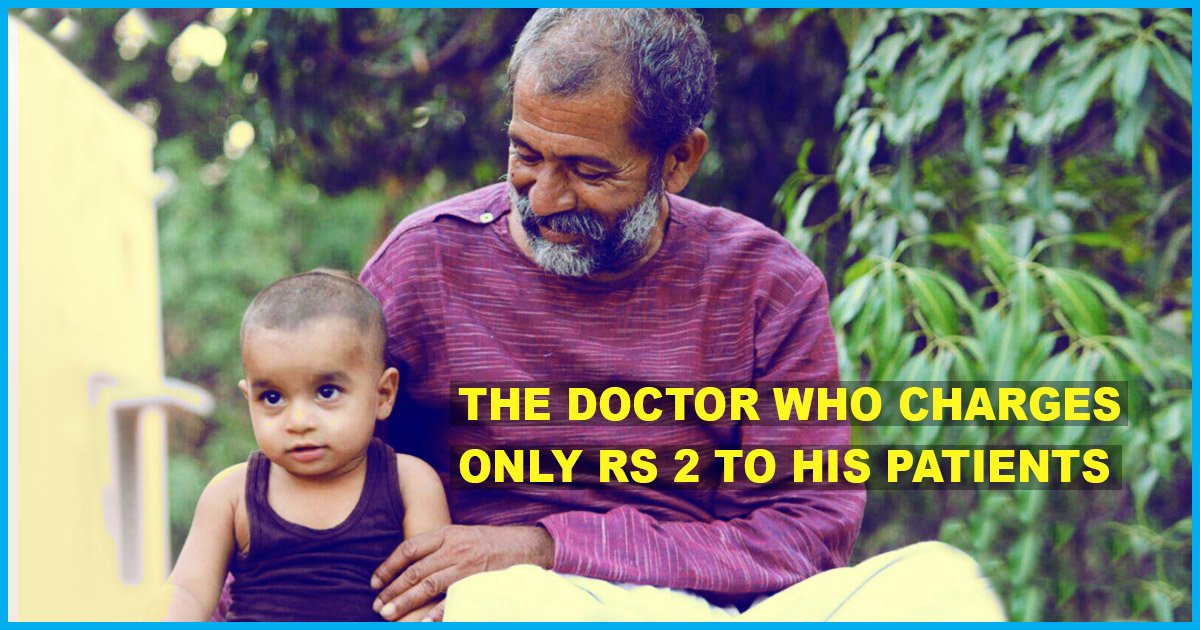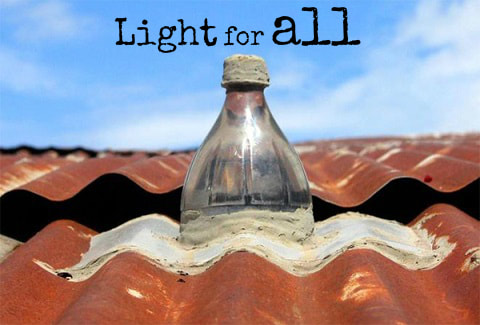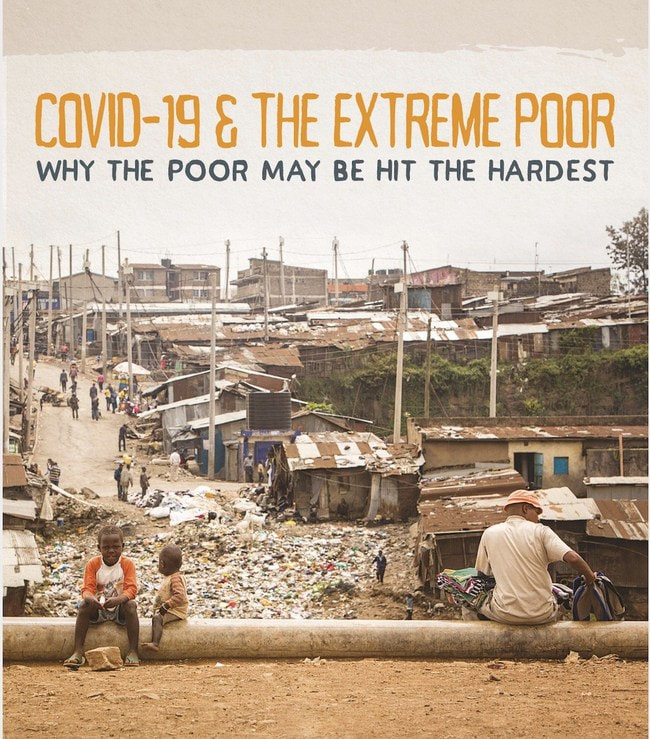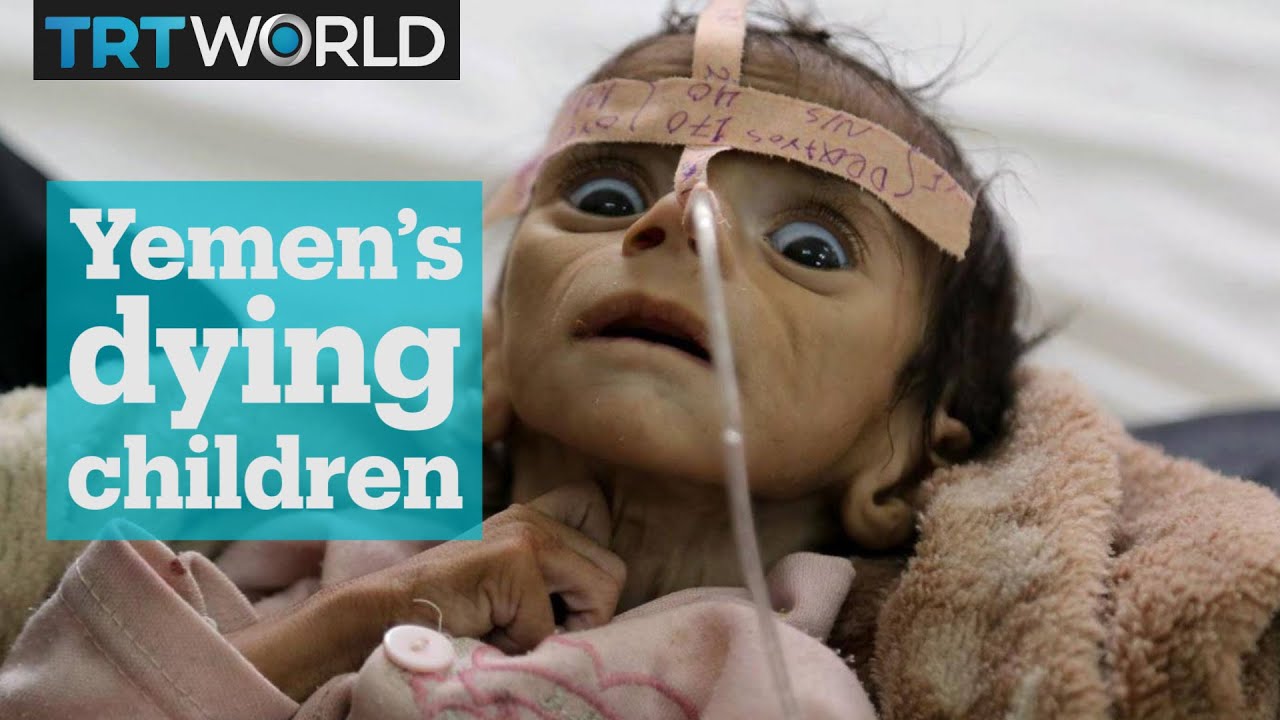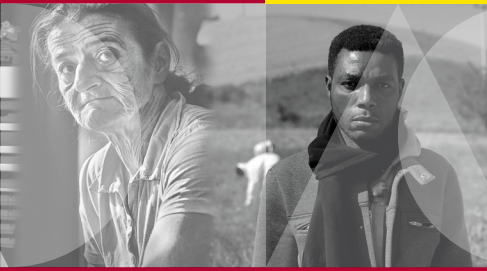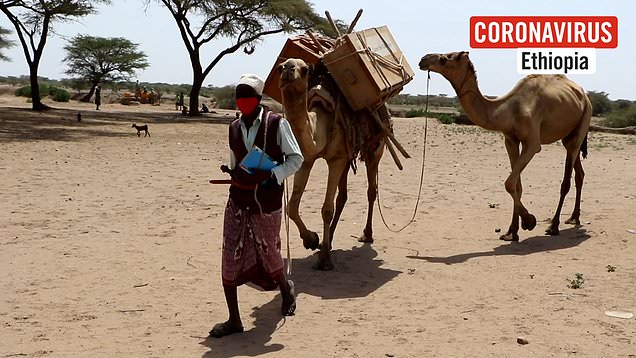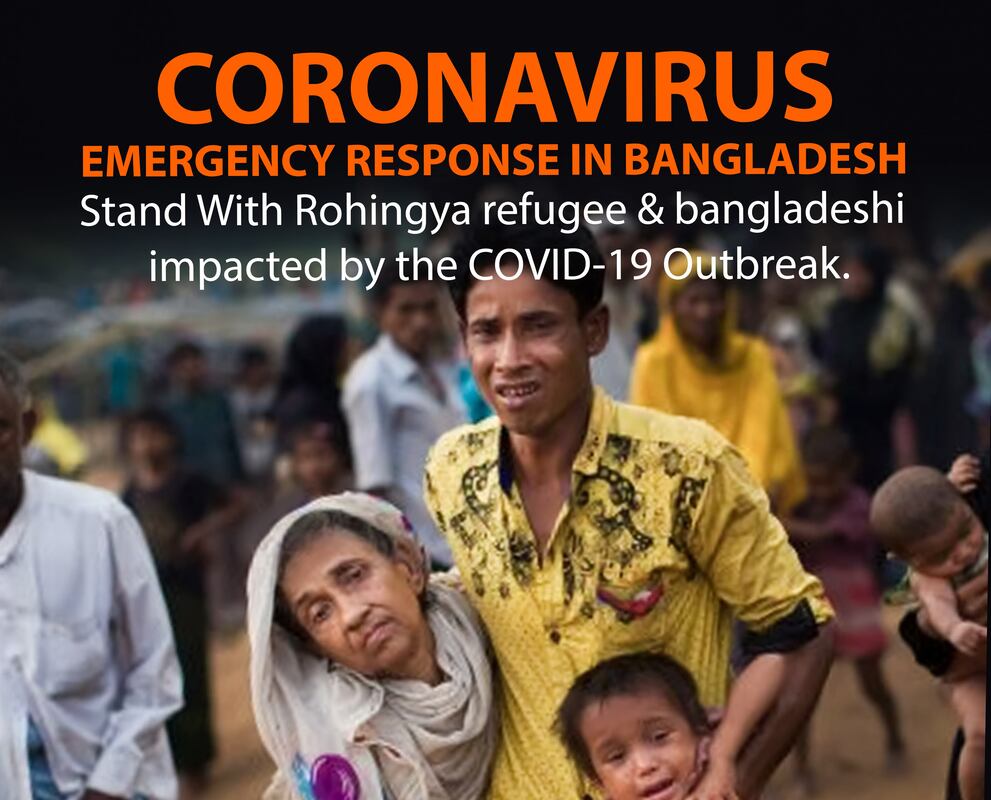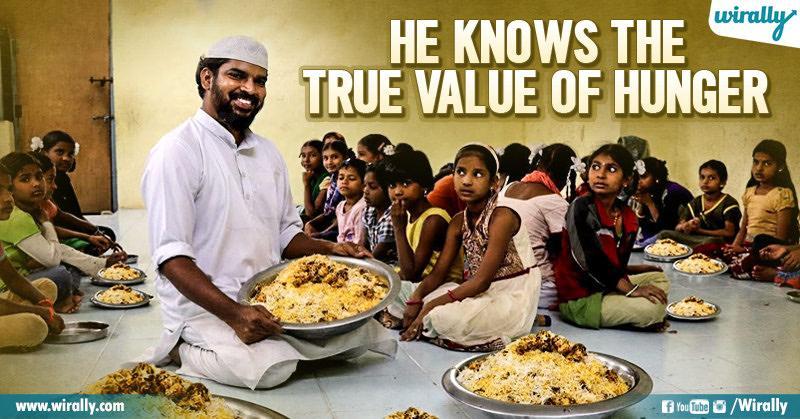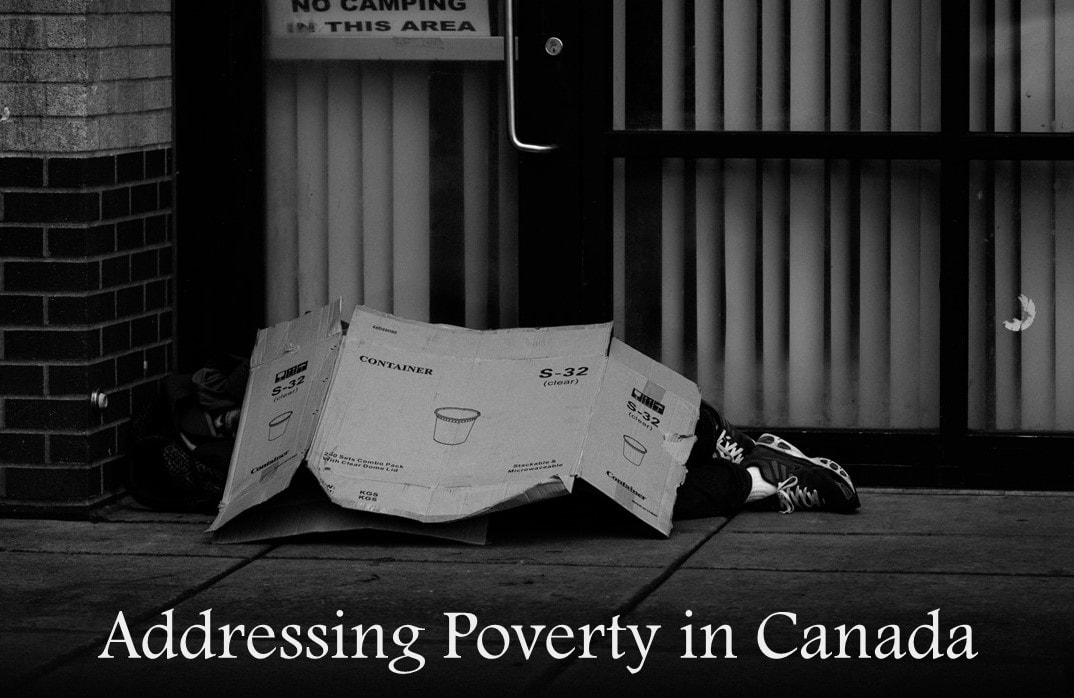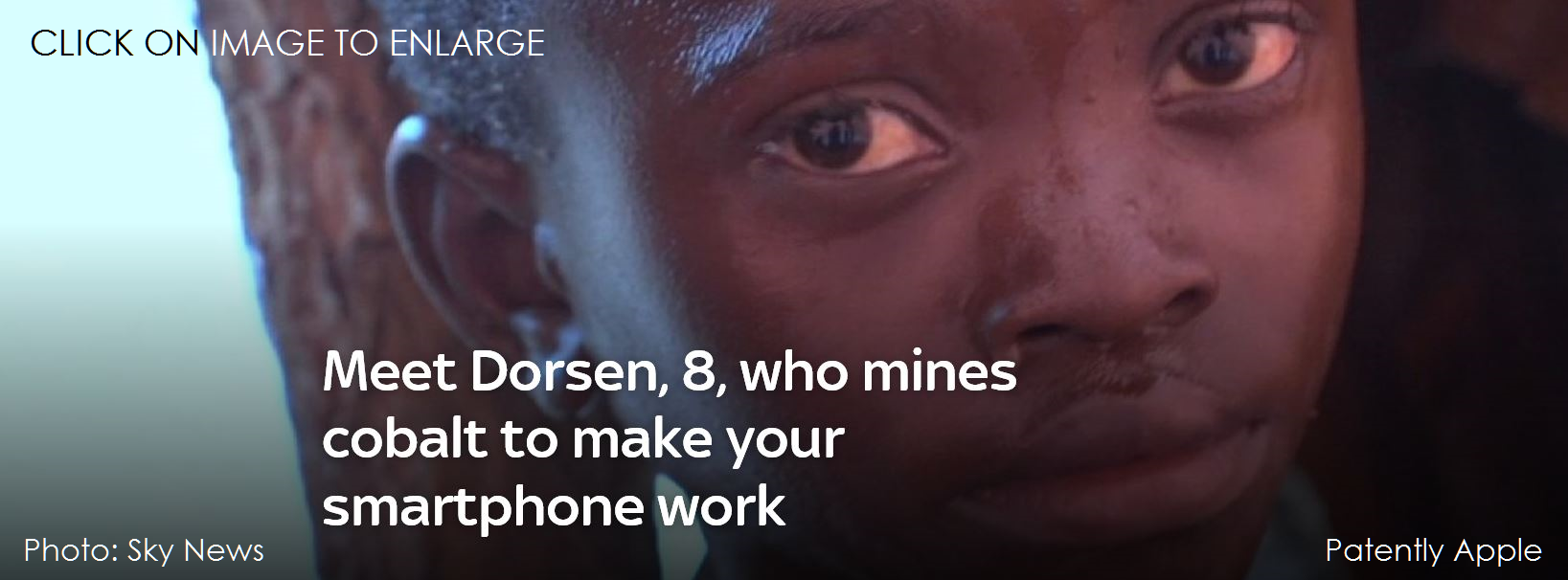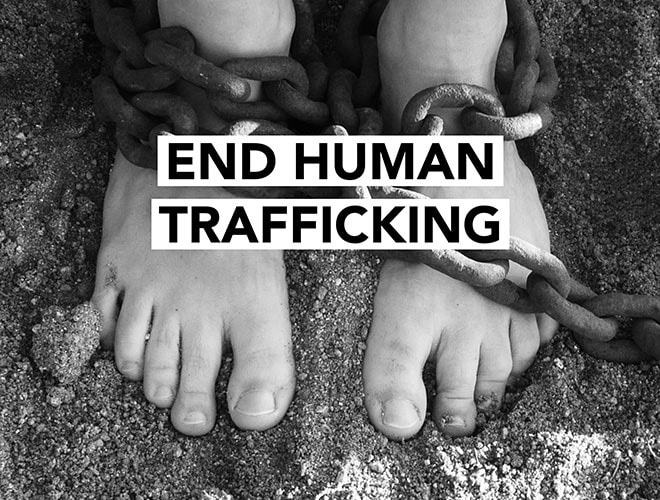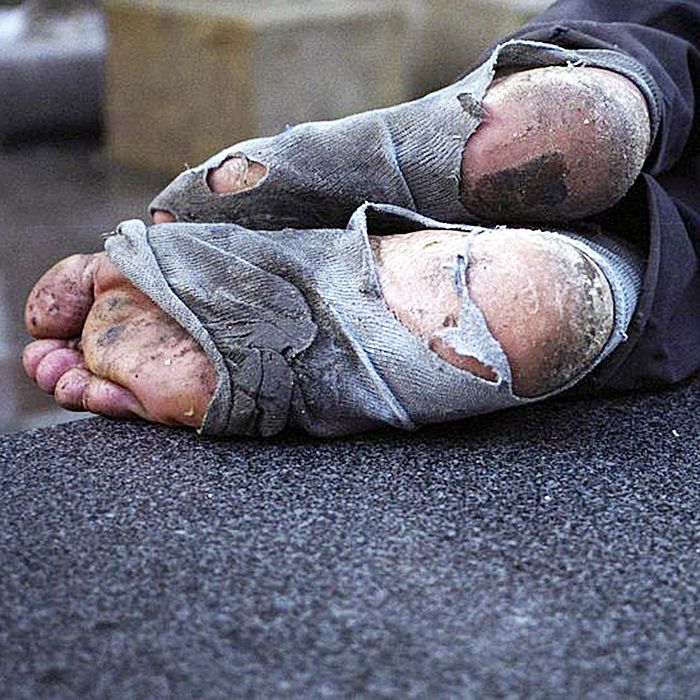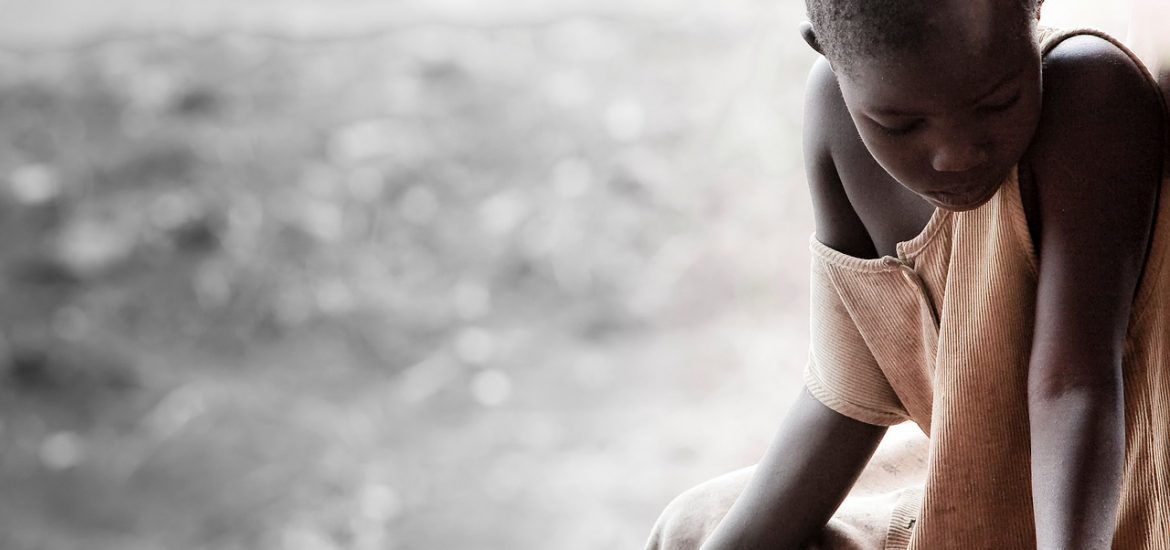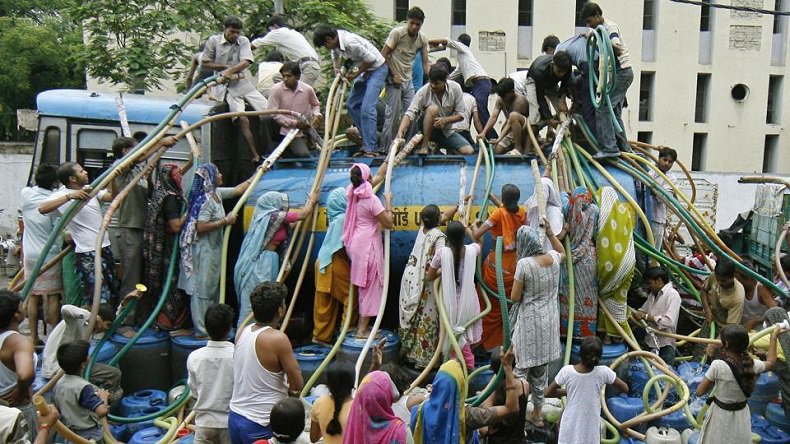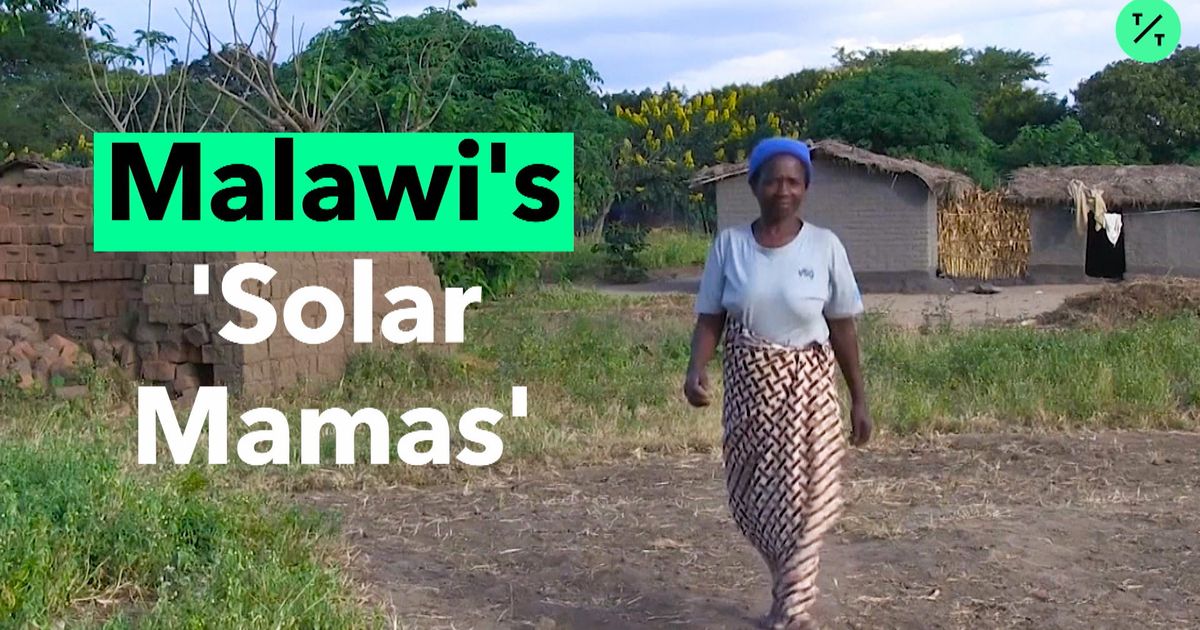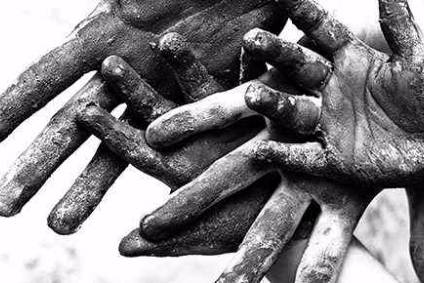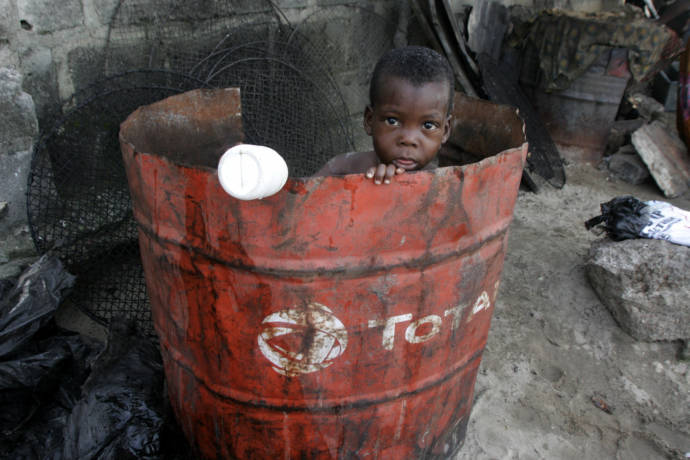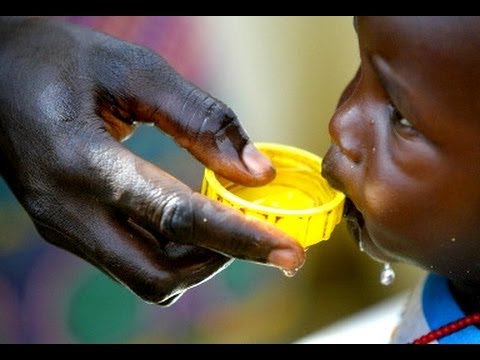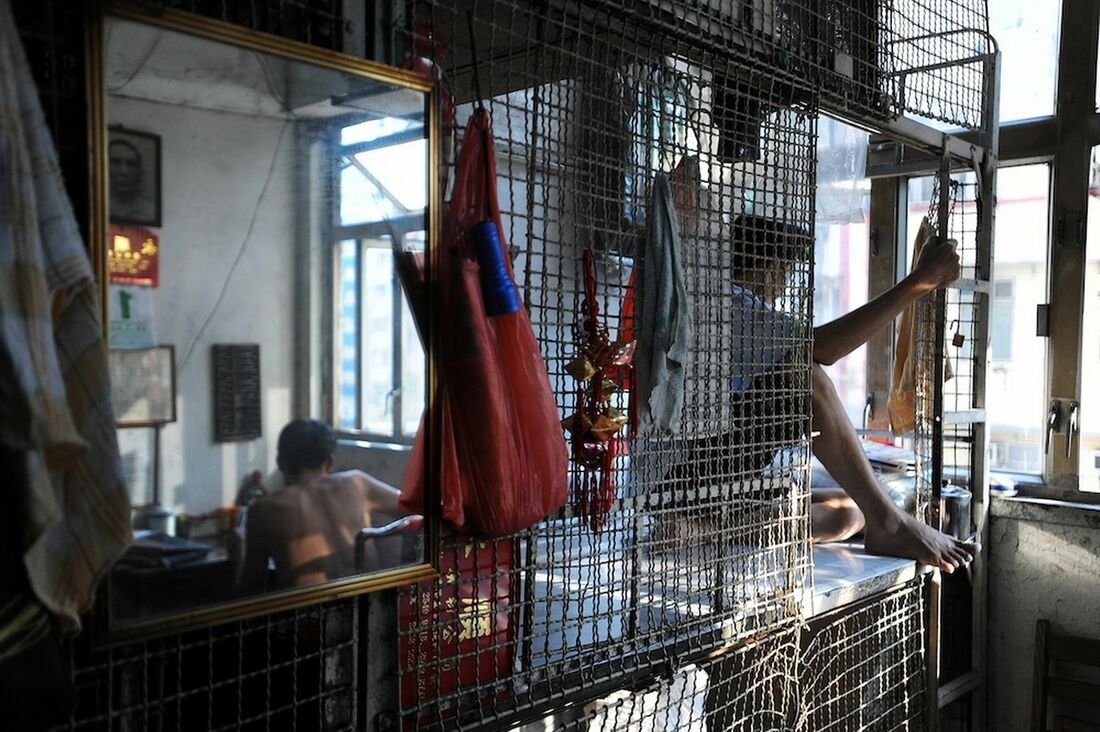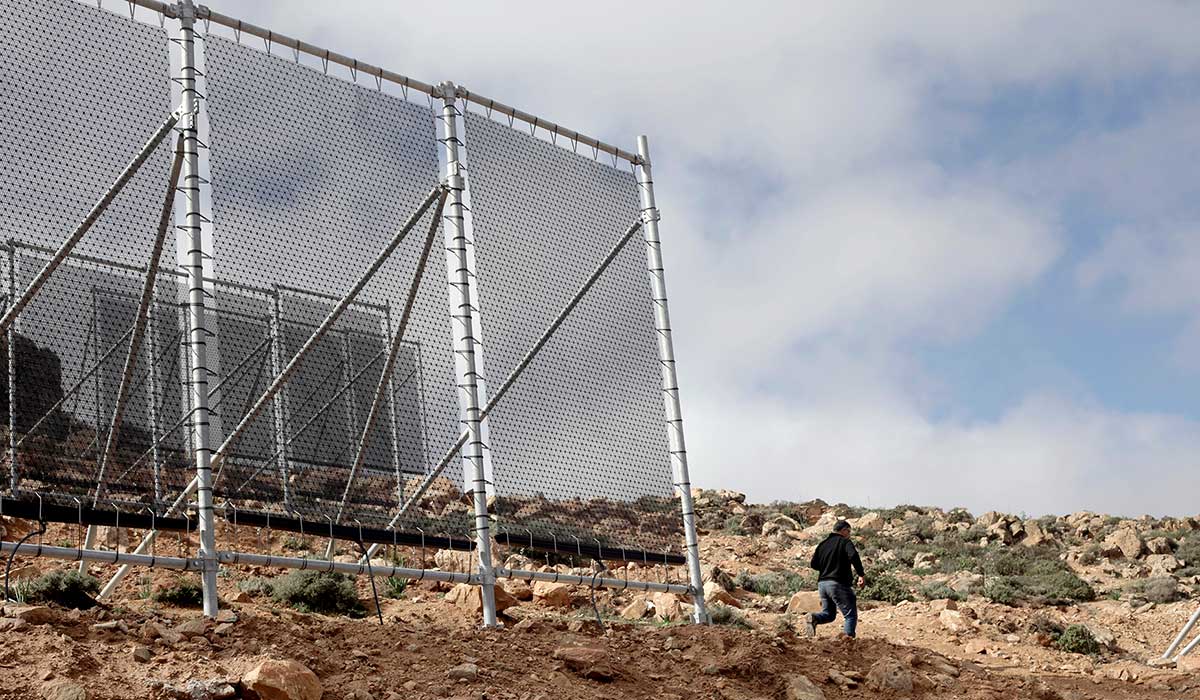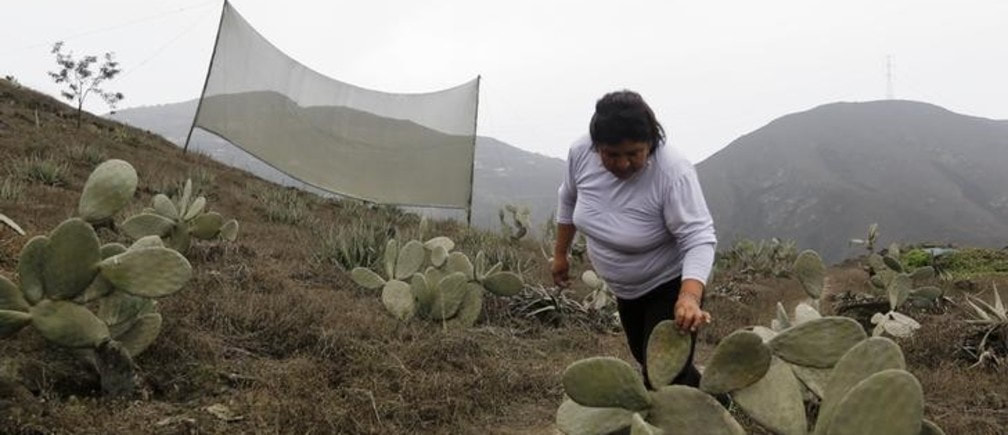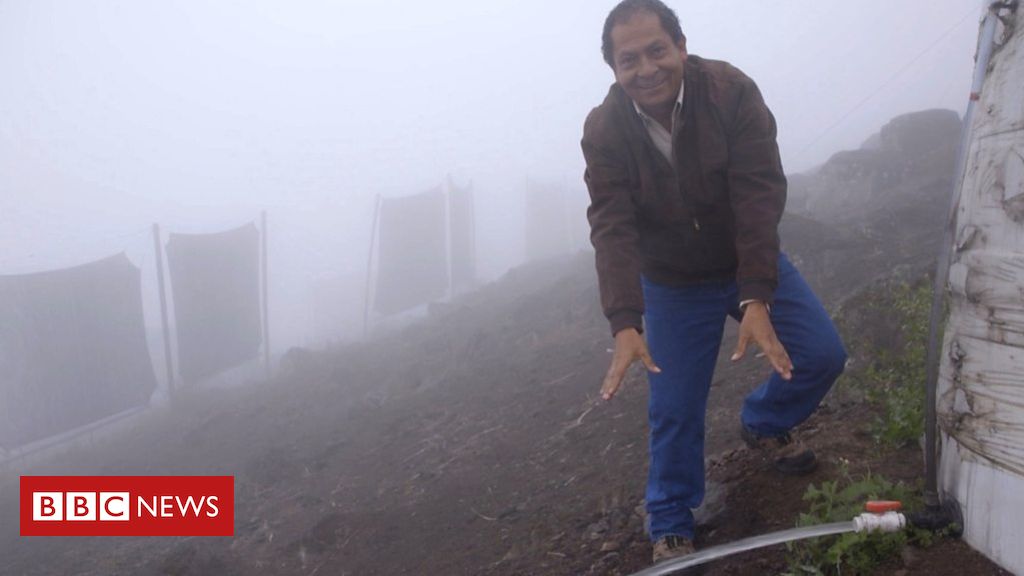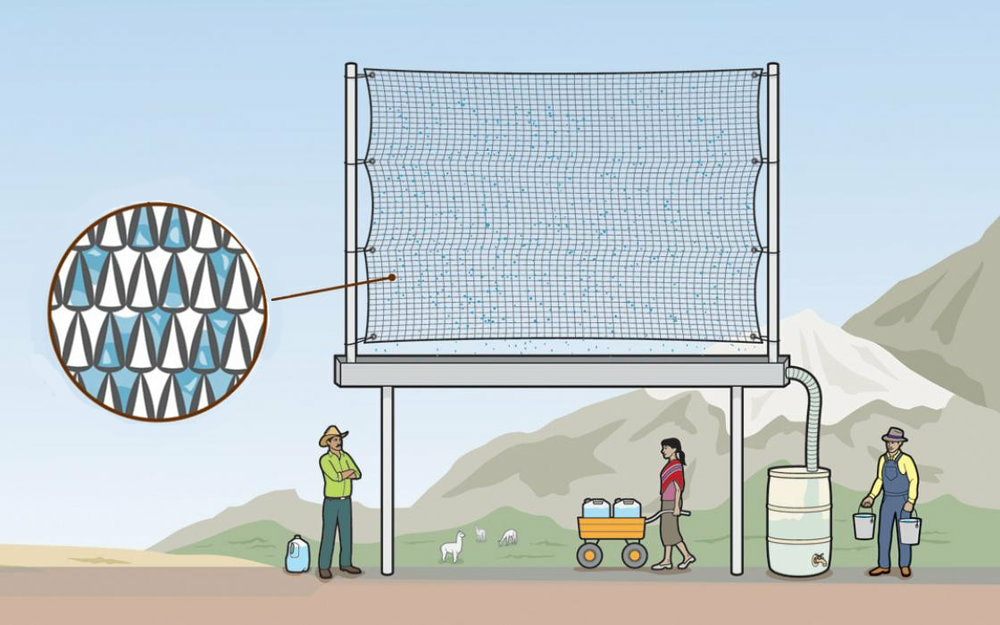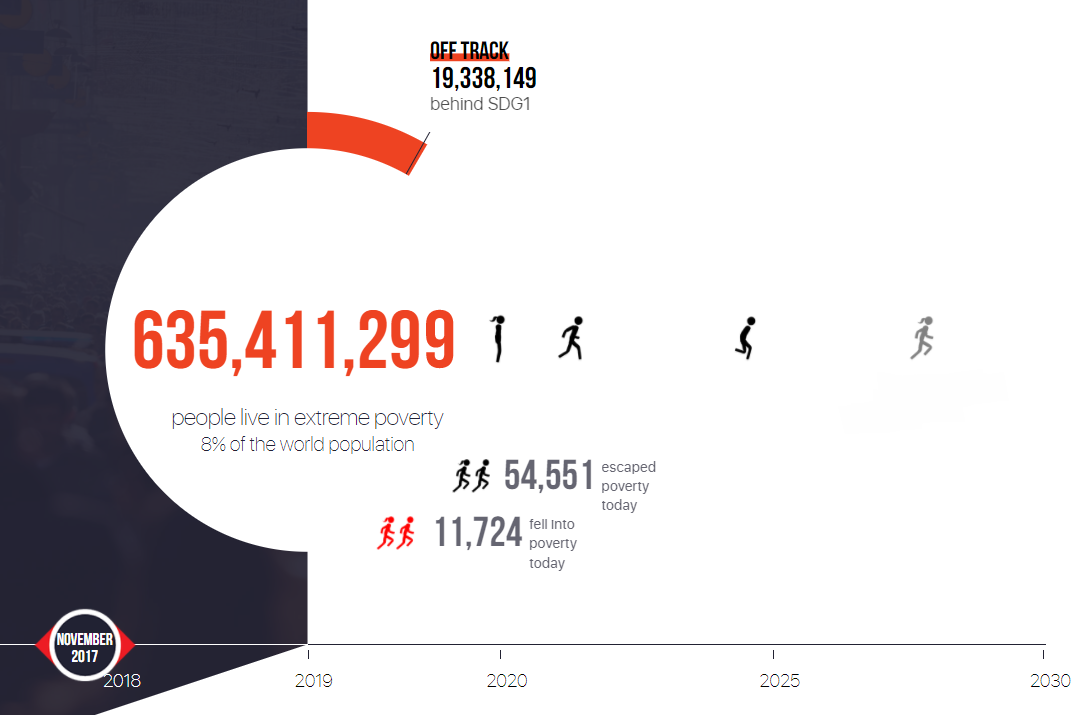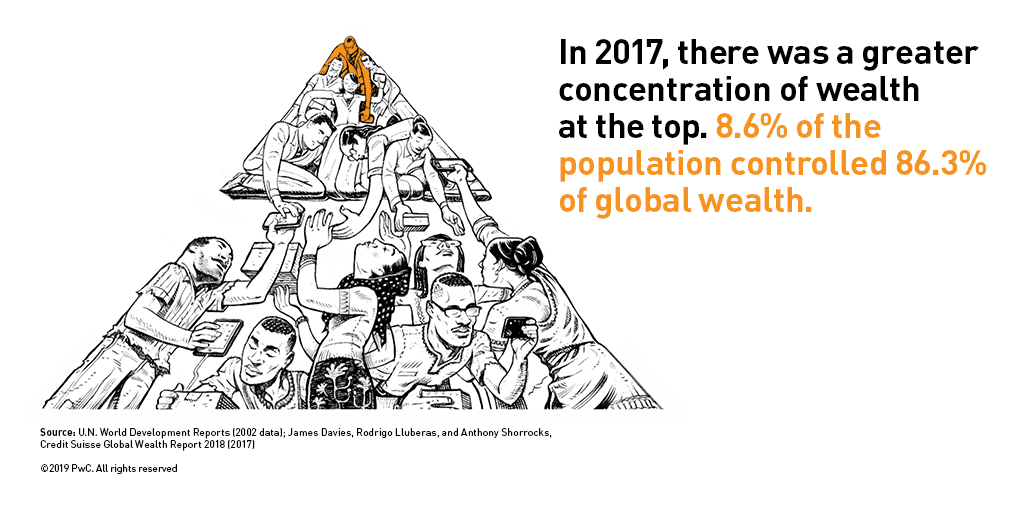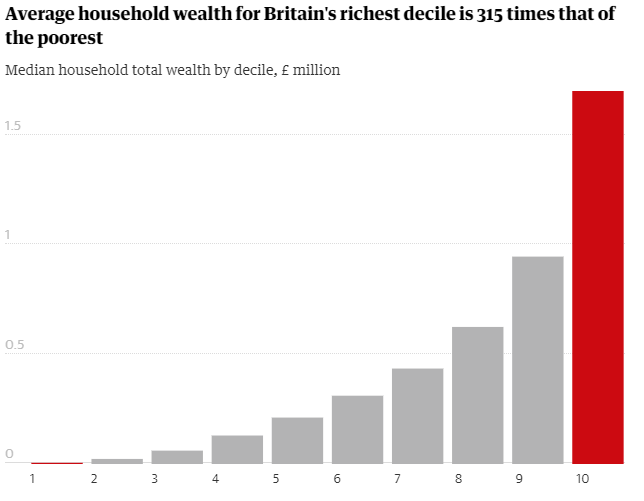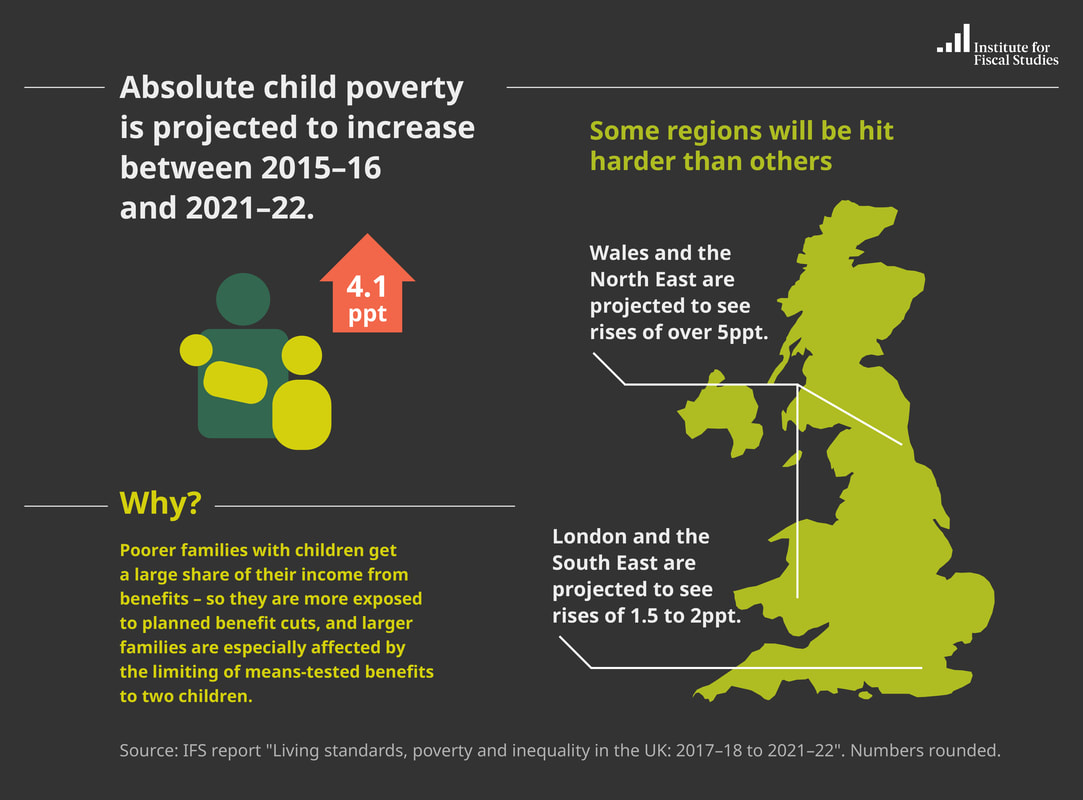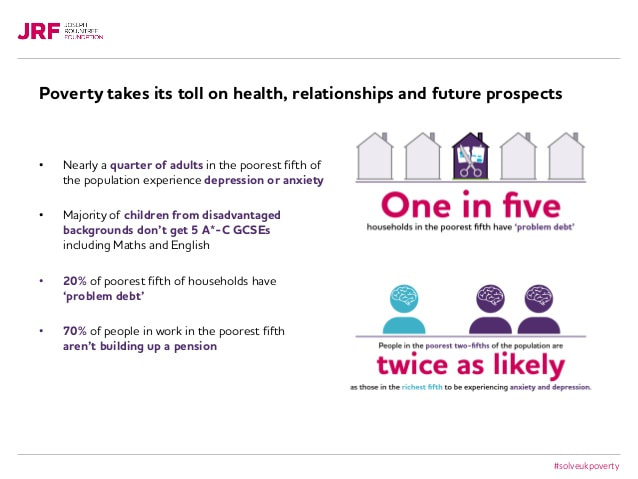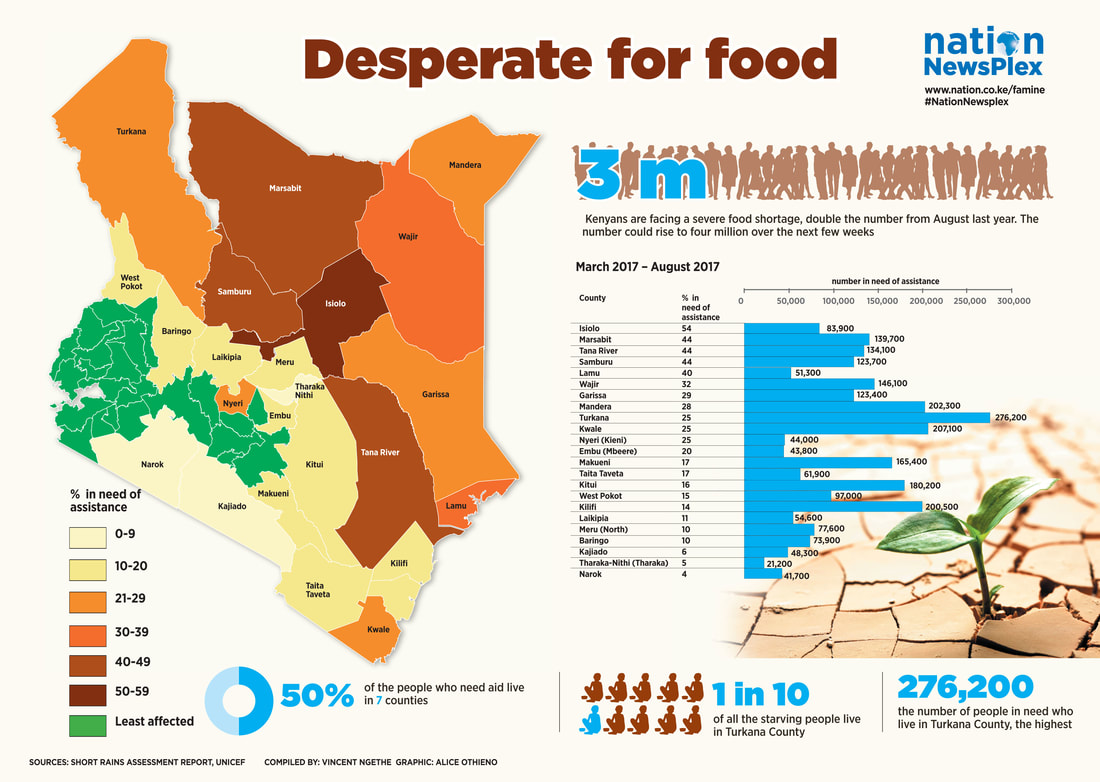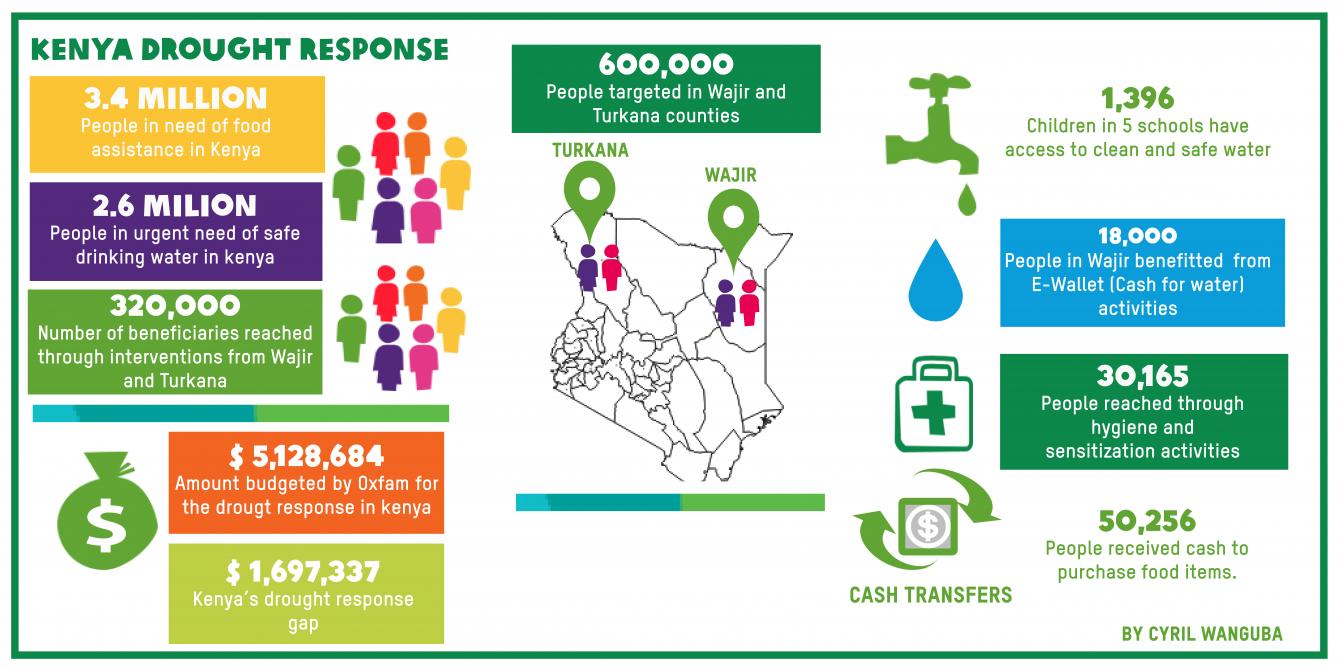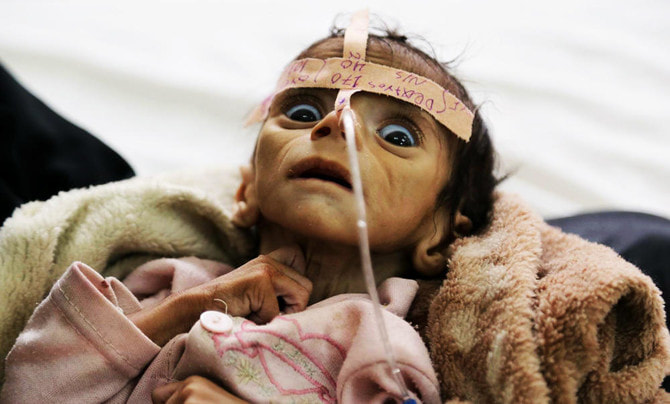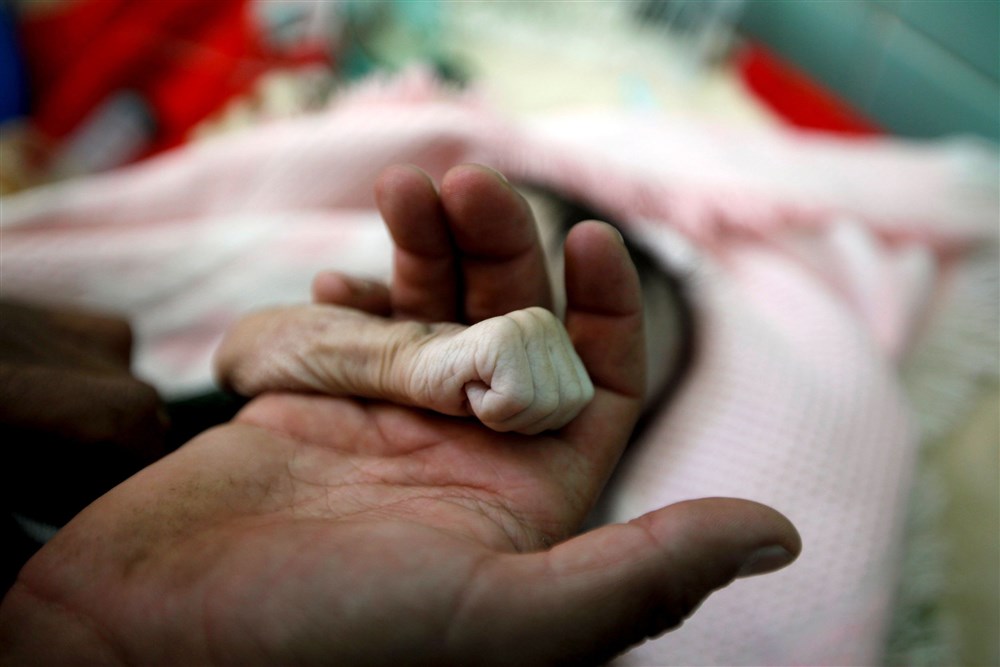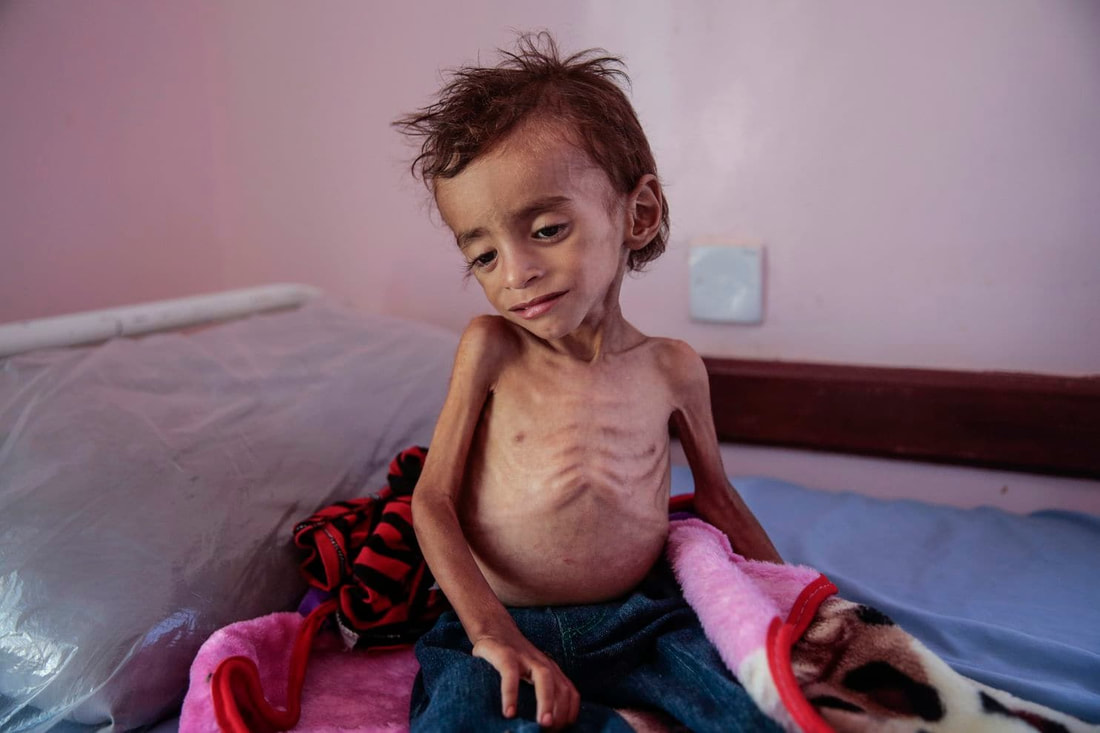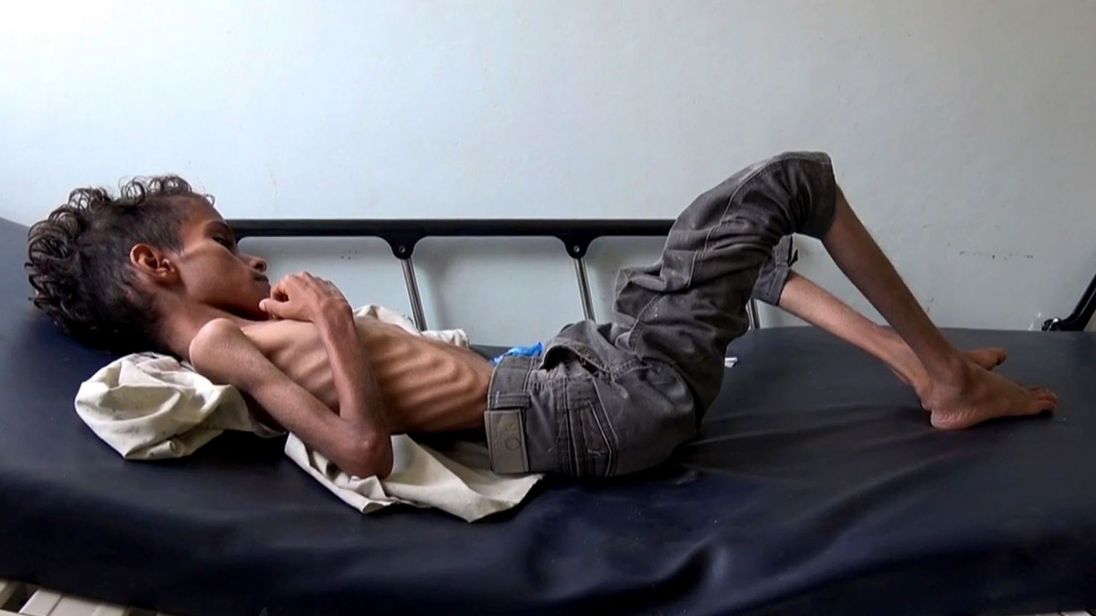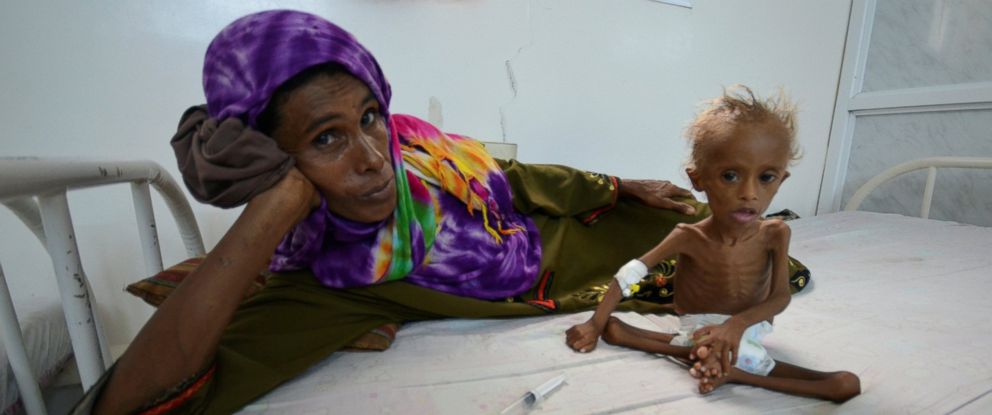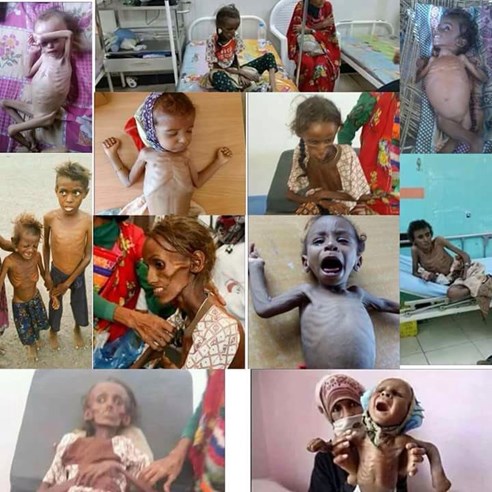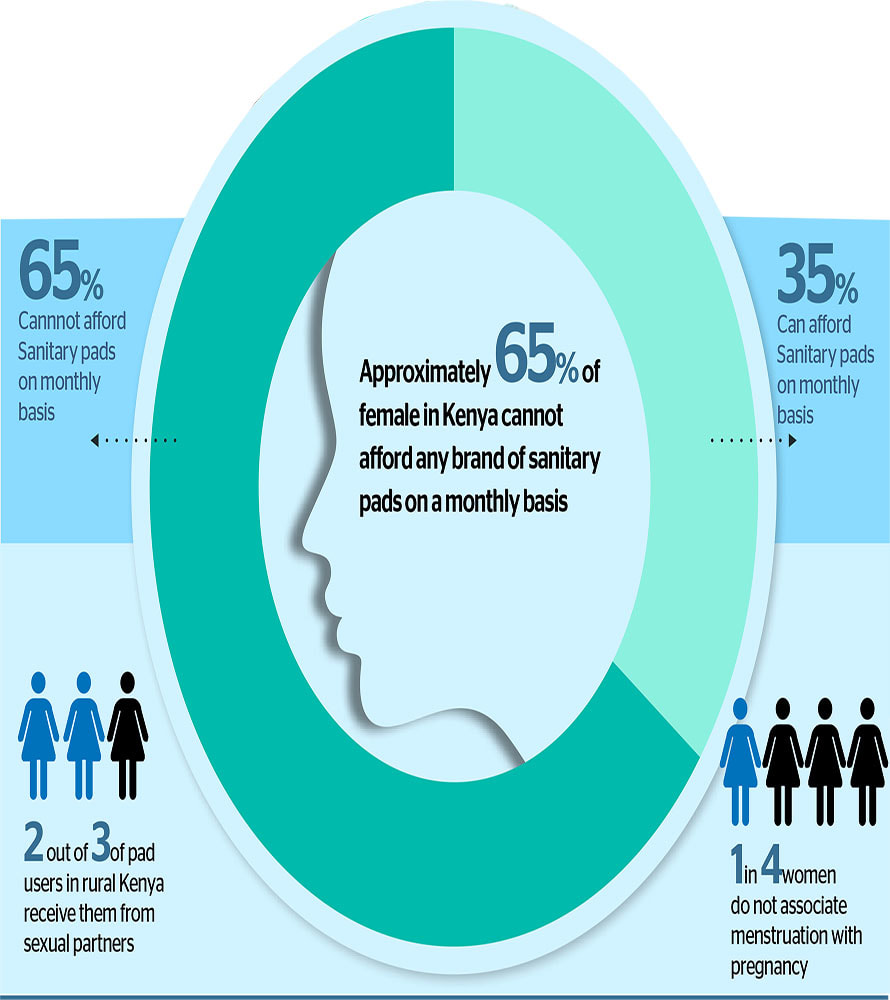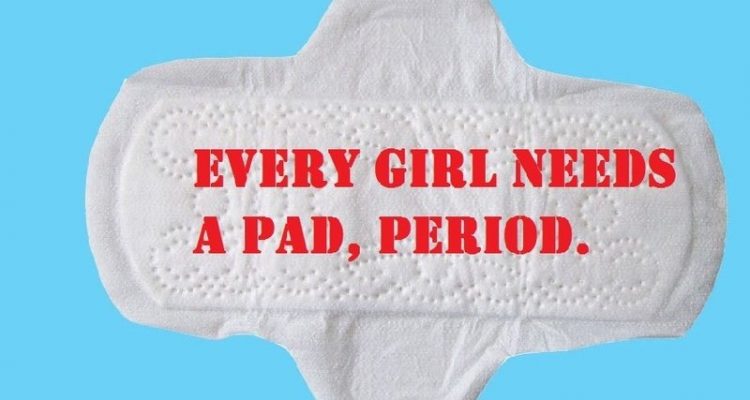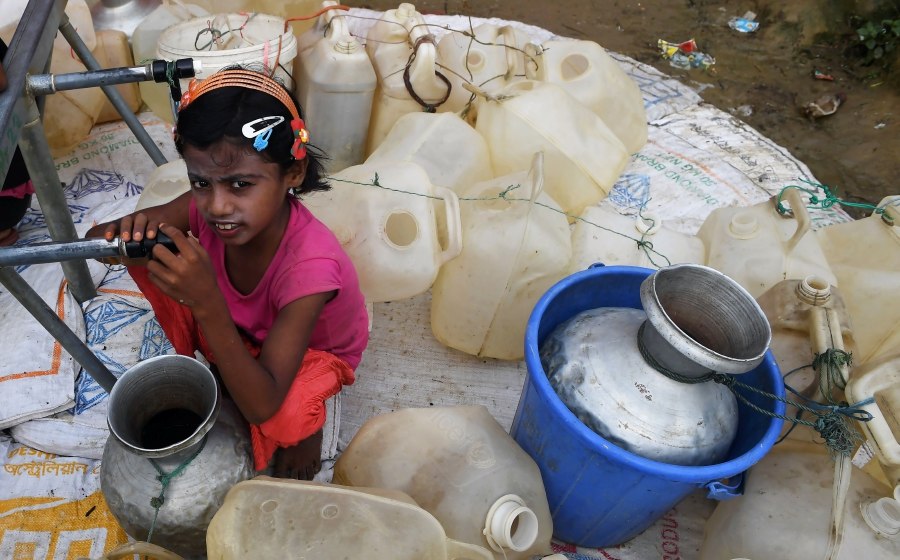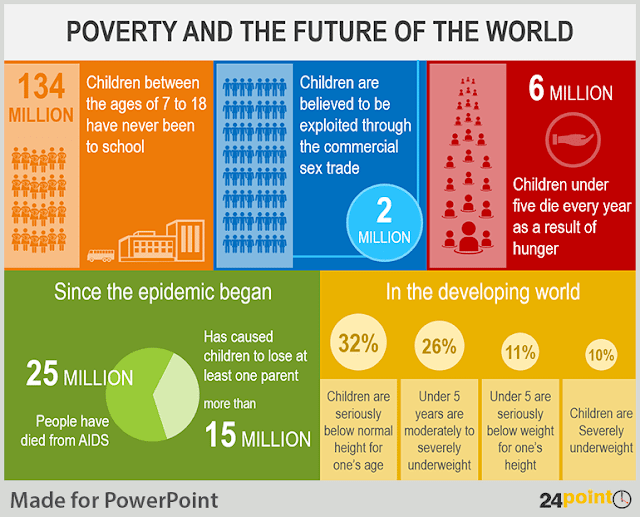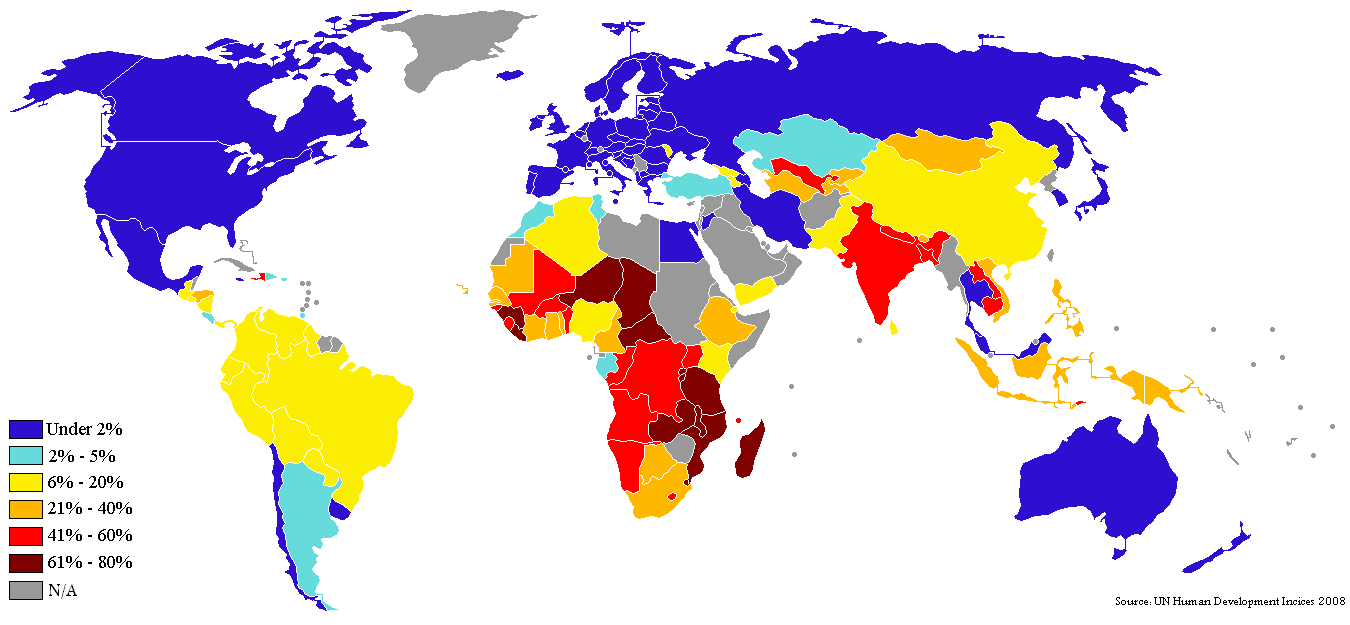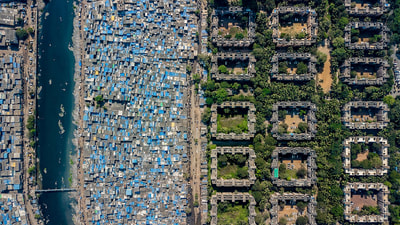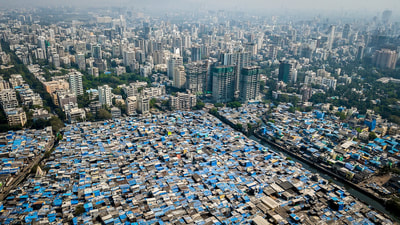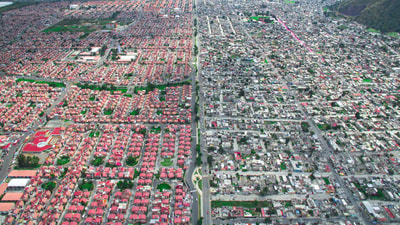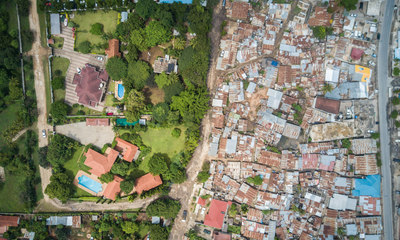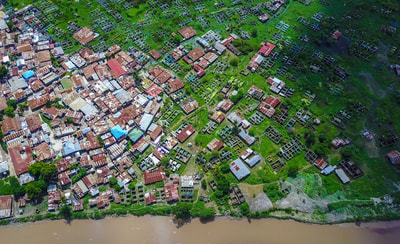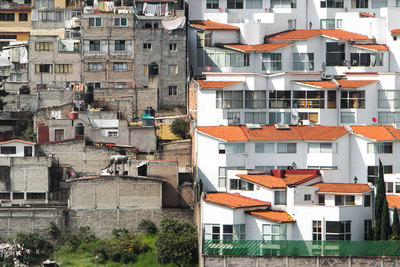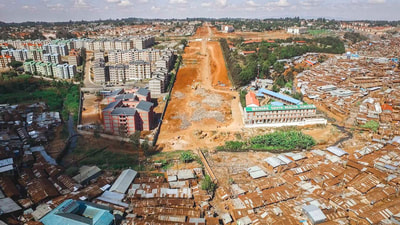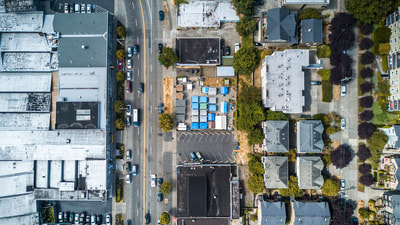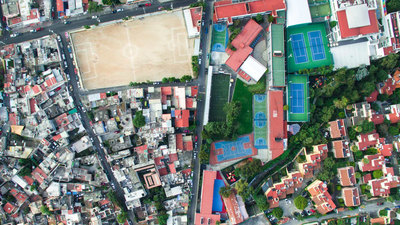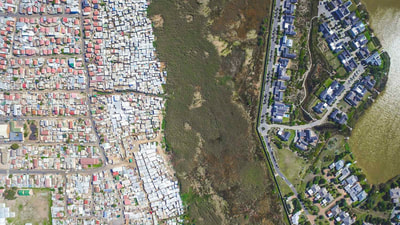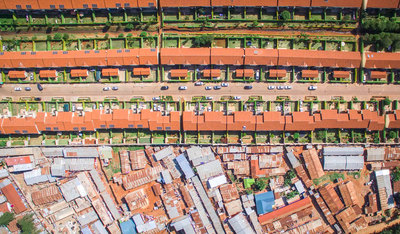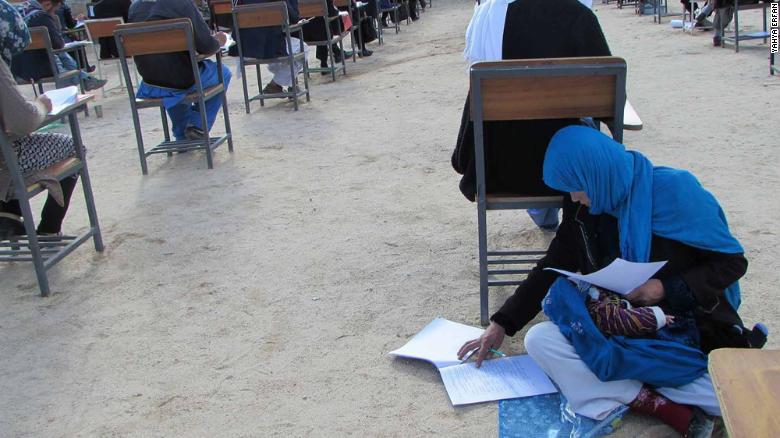Poverty Defined
The most widely held and understood definition of extreme poverty, established by the World Bank, defines poverty in strictly economic terms — earning less than $1.90 a day.
Worldwide 600 million children live in extreme poverty. Almost half the world — over 3 billion people — live on less than $2.50 a day.The poor themselves describe poverty in terms of suffering relationships.
The most widely held and understood definition of extreme poverty, established by the World Bank, defines poverty in strictly economic terms — earning less than $1.90 a day.
Worldwide 600 million children live in extreme poverty. Almost half the world — over 3 billion people — live on less than $2.50 a day.The poor themselves describe poverty in terms of suffering relationships.
10.12.2025
(101) Winter Rains Flood Thousands Of Tents Sheltering Displaced Civilians In Gaza
10.10.2025
(100) Bangladesh: Over Half a Million Garment Workers Living In 'Inhumane Conditions' Due to Factory Closures
29.08.2025
(99) Graveyard Living: Inside The 'Cemetery Slums' Of Manila
26.06.2025
(98) Doctor Deficit Straining Sierra Leone's Healthcare
25.04.2025
(97) Myanmar: Thousands Remain In Crisis Weeks After Deadly Earthquakes
10.03.2025
(96) Death Toll Rises To 30 In Uganda Garbage Dump Landslide
14.02.2025
(95) Education Crisis In Pakistan Leaves 26 Million Children Out Of School
16.01.2025
(94) 474 Homeless People Died Due To Winter Exposure In Delhi, Claims NGO
22.11.2024
(93) Inside The Philippines’ Underground Surrogacy Industry
07.10.2024
(92) Record Number of Migrants Cross the English Channel In a Single Day
05.09.2024
(91) Combatting Learning Poverty
03.08.2024
(90) Leftover Emeralds: The Dream Of Colombia's Poor Miners
19.07.2024
(89) Ugandan Entrepreneur's Solar Bags Help 12,000 Girls Stay In School
07.06.2024
(88) Crossing the Darién Gap: Migrants Risk Death on the Journey
08.05.2024
(87) 282 Million People Faced Acute Hunger in 2023 , UN report.
03.04.2024
(86) Boiling Weeds, Eating Animal Feed: People In Gaza Stave Off Hunger Any Way They Can
10.03.2024
(85) Nigeria Facing the Worst Economic Crisis in Its 63-year History
28.02.2024
(84) Ghana's Economic Crisis Deepens: Soaring Inflation and Poverty
18.01.2024
(83) Hong Kong’s Wealth Gap Reaches Record High of 57 times: Over 1.36 Million People Struggling In Poverty
20.12.2023
(82) Pakistan Chulahs: The Smokeless Stoves Empowering Women And Changing Lives
14.11.2023
(81) 1.7 Million Afghan Refugees Forced To Leave Pakistan Say They Have Nothing
14.10.2023
(80) Ininnawa: Indonesia’s Remote Island Nurses
15.09.2023
(79) Argentina Inflation Hits 124% As Cost-Of-Living Crisis Sharpens
09.08.2023
(78) 122 Million More People Were Hungry in 2022 And 813 Million In Total.
22.06.2023
(77) World's Slum Populations Set To Surge As Housing Crisis Bites
13.05.2023
(76) Title 42 Ends With 90,000 Migrants Waiting Near U.S.-Mexico Border
17.04.2023
(75) Millions Are Trapped In Modern-Day Slavery At Brick Kilns In Pakistan
26.02.2023
(74) Plastics For Change Foundation India Donates House To Plastic Recyclers
02.01.2023
(73) 8.1 Million People In Thailand Poor, 4.4 Million Below Poverty Line
09.12.2022
(72) One Third Of The World’s School-Age Children Have No Internet Access At Home
05.11.2022
(71) Mobile School On Train Tracks Helps Underprivileged Philippine Children Get An Education
22.09.2022
(70) One Person Dying Of Hunger Every 4 Seconds
15.09.2022
(69) Poorest Pakistanis Face Heavy Cost Of Floods
05.08.2022
(68) Somalia’s Drought Leaves Nearly 7 Million Desperate With Hunger
30.07.2022
(67) How Urban Gardening Can Help Kampala's Poor
22.06.2022
(66) World Refugee Day 2022 : Global Displacement Hits a Record 100m
03.06.2022
(65) Taxing Extreme Wealth Could Lift 2.3 Billion People Out of Poverty
27.05.2022
(64) 50-foot 'Coffin Homes' Highlight The Scale of Inequality In Hong Kong
26.04.2022
(63) Congo Nun Overcomes Blackouts With Homemade Hydroelectric Plant
02.04.2022
(62) Sri Lanka Crisis: 13-Hour Daily Power Cuts, Severe Food And Medicines Shortages, As Country Faces Worst Economic Collapse Since 1948
06.03.2022
(61) Lava Mae Provides Mobile Showers For Homeless People
25.01.2022
(60) Entrepreneur Brings Clean, Affordable Energy for Sierra Leone's Rural Areas
31.12.2021
(59) Turning Human Waste Into Organic Fertilizers
27.11.2021
(58) 2.4 Million Orphans In Uganda Due To The Extreme Poverty and Civil Conflict
20.11.2021
(57) 300 Million Children Around The World Don't have Shoes: Kenton Lee Fights Soil-Transmitted Diseases With "Shoe That Grows"
12.11.2021
(56) Plastic Surgeon Has Performed Over 37,000 Free Cleft Palate Surgeries
29.10.2021
(55) 70% Of The World's Population Do Not Have Access To Electric Washing Machines
08.09.2021
(54) "WaterLight" Converts Saltwater And Urine Into Electricity
04.07.2021
(53) Covid-19 Pandemic Fueling Child Labour : 1 in 10 Children Worldwide Were Engaged In Labour
09.06.2021
(52) More Than 1 Million People Facing Starvation as Madagascar’s Amid Worst Drought in 40 years
01.05.2021
(51) India Slum Residents Fear COVID Explosion In Cramped Conditions
14.03.2021
(50) Wheels to Africa – Sending Bikes to Those Who Need them Most !
02.01.2021
(49) The Doctor Who Charges Only 3 Cents to Save Lives.
16.12.2020
(48) Turning Trash Into Light , 1.1 Billion Are Living In The Dark.
16.10.2020
(47) COVID-19 Pandemic Pushes Up to 150 Million More People Into Extreme Poverty
13.09.2020
(46) COVID-19: Ugandans' Children, Single Mothers Struggle for Survival
13.07.2020
(45) Yemen: Millions of Children Facing Deadly Hunger, Amidst Aid Shortages and COVID-19.
27.06.2020
(44)‘No Food, No Water, No Masks and No Gloves': Migrant Farm Workers in Spain at Crisis Point.
14.06.2020
(43) Mobile Camel Library Keeps Ethiopian Children From Forced Labor.
31.05.2020
(42) Rohingya Refugee Camp Hit By Covid-19 Outbreak.
04.04.2020
(41) In Poor Countries, The Lockdown Cure Could be Worse than Disease.
01.04.2020
(40)‘We Will Starve Here’: India’s Poor Flee Cities in Mass Exodus.
17.02.2020
(39)This Man Feeds 1200 Orphans Every Month Through His Viral Food Channel.
23.01.2020
(38)More Than 4 Million People in Canada Struggle to Get Enough to Eat.
17.12.19
(37)Is Your Phone Tainted by the Misery of the 35,000 Children in Congo's Mines?
14.12.19
(36) 1.4 million Venezuelans had Crossed into Colombia on Foot to Escape Poverty
25.10.19
(35)Demand for Cheap Labour Driving Human Trafficking Tragedy of 39 Deaths Driven by Debt.
02.09.19
(34)An Estimated 2% of the World's Population (160 million) are Homeless .
23.08.19
(33)Poorer than We Think: Malaysia's Poverty Levels Far Higher than Reported, U.N. Expert Says
06.07.19
"Climate Apartheid",
(32)-where the rich pay to save themselves, "while the rest of the world is left to suffer".
01.07.19
(31) 600 million people facing acute water shortage in India.
18.06.19
(30)‘Solar Mama’ Edina Levitico on Bringing Solar Power to Malawi Village.
23.05.19
(29)World Day Against Child Labour 12 June.
28.03.19
(28)Six People Fall Into Extreme Poverty in Nigeria Every Minute.
28.02.19
(27) 'Water from air' quenches threatened girls' thirst in arid Kenya .
16.02.19
(26)Living in Cages: The Stories Behind Hong Kong’s Housing Crisis.
13.02.19
(25)Turning Fog Into Water Transforms Women's Lives in Morocco.
They are known as water guardians. Women in Southwest Morocco’s rural communities begin their trek as early as 4 a.m. and spend an average of 3.5 hours a day making multiple trips to collect water for their families. In the summer, it takes them more than four hours. Sometimes they return empty-handed because the wells are dry or their buckets broken. When available, they offer the water first to their children, elders and then the animals, often leaving the women thirsty at the end of arduous days. For girls it often means that they could not continue school, in order to help their mothers with the daily water gathering. Harvesting water from fog is an ancient and relatively straightforward technique that requires few materials and no electricity. The process consists of hanging specialized plastic nets between two tall poles to trap the tiny water droplets found in fog. When the wind pushes fog through the vertical mesh, the droplets are trapped, then drip into a gutter at the base of the unit. This pure water is collected and distributed via plastic pipes that run down the mountain into homes in nearby villages. The 870 square meters of nets installed by Dar Si Hmad collect an average of 22 liters of water per square meter every day. Credit: UN Climate Change
23.01.19
(24)The Latest Global Extreme Poverty Numbers from World Bank
Despite the progress made in reducing poverty, the number of people living in extreme poverty globally remains unacceptably high. And given global growth forecasts, poverty reduction may not be fast enough to reach the target of ending extreme poverty by 2030.
- More than half of the extreme poor live in Sub-Saharan Africa. In fact, the number of poor in the region increased by 9 million, with 413 million people living on less than US$1.90 a day in 2015, more than all the other regions combined. If the trend continues, by 2030, nearly 9 out of 10 extreme poor will be in Sub-Saharan Africa.
- The work to end extreme poverty is far from over, and many challenges remain. The latest projections show that if we continue down a business-as-usual path, the world will not be able to eradicate extreme poverty by 2030. That’s because it is becoming even more difficult to reach those remaining in extreme poverty, who often live in fragile countries and remote areas. Access to good schools, health care, electricity, safe water, and other critical services remains elusive for many people, often determined by socioeconomic status, gender, ethnicity, and geography. Moreover, for those who have been able to move out of poverty, progress is often temporary: Economic shocks, food insecurity and climate change threaten to rob them of their hard-won gains and force them back into poverty. It will be critical to find ways to tackle these issues as we make progress toward 2030.
- Credit: WORLD BANK GROUP
23.01.19
(23)Fifth of UK population now in poverty amid worst decline for children and pensioners in decades.
The report, by the independent Joseph Rowntree Foundation (JRF), shows that a total of 16 million people in the UK currently live in poverty – more than one in five of the population. More than a fifth of the population live on incomes below the poverty line after housing costs are taken into account, even though most of these households are in work. Nearly one in three children live in poverty and the use of food banks is rising. There is a sixfold difference between the income of the top 20% of households and those of the bottom 20%. Wealth inequality is much worse, with 44% of the UK’s wealth owned by just 10% of the population, five times the total wealth held by the poorest half. Credit: WORLD ECONOMIC FORUM
10.12.18
(22)Kenya: women and girls forced to engage in sex to survive near-famine
Women and girls in Turkana County, northern Kenya, are being exploited in exchange for money to buy food, the International Rescue Committee said today. The IRC is seeing an increase in gender-based violence, early and forced marriage, and women and girls engaging in transactional sex as a direct consequence of food insecurity caused by drought in the region. 2.6 million people are food insecure, and the area has seen a 5-fold increase in food prices, conflict around watering points, loss of livestock, and an increase in malnutrition and infectious diseases. As a result of the drought, girls as young as 12 years old are moving from rural to urban areas to engage in transactional sex. Mostly being solicited in nightclubs, they receive as little as 50 shillings (US$0.50) in exchange for sex. Many of these young girls report being the head of their household with younger siblings or even children of their own who depend on them for food. Credit: International Rescue Committee (IRC)
24.11.18
(21)Hunger, disease has killed 85,000 young children in Yemen War.
An estimated 85,000 children under age five may have died of hunger and disease since the outbreak of war in Yemen three years ago, an international aid group said Wednesday. Save the Children based its figures on mortality rates for untreated cases of severe malnutrition in young children. The United Nations says more than 1.3 million children have suffered from severe malnutrition since a Saudi-led coalition went to war with Yemen's Houthi rebels in March 2015. The war has given rise to what the UN deems the world's worst humanitarian crisis. Three-quarters of Yemen's people require life-saving assistance, and more than eight million are at risk of starvation. Tens of thousands of people are believed to have been killed in the fighting. Credit: SBS NEWS
13.10.18
(20)Having a period is unaffordable in Kenya, yet no one wants to talk about it.
ZanaAfrica is fighting to get menstruation on the national curriculum as it’s revealed two thirds of Kenyan women and girls cannot afford sanitary pads. In Kenya, 65% of women and girls are unable to afford sanitary pads. “When people earn less than two bucks a day, is a family going to [get] bread, milk and food, or a girl’s sanitary pads?” says ZanaAfrica. Access to sanitary products is of limited help if schools don’t have the supporting infrastructure, such as separate bathrooms for girls with doors and locks for privacy. In rural areas of Kenya, only 32% of schools have a private place for girls to change their sanitary products. Many teachers are also uncomfortable talking about or teaching menstruation. ZanaAfrica will distribute a variety of sanitary products and will pilot Nia teen magazine , to teach girls about menstruation and reproductive health. Credit: ZanaAfrica
22.9.18
(19)KNOW YOUR WORLD: FACTS ABOUT WORLD HUNGER
Today there are 821 million people who do not have enough to eat. This is more than the 795 million in 2016, although still down from about 900 million in 2010. Nearly half of all deaths in children under 5 are attributable to under-nutrition. This translates into the unnecessary loss of about 3 million young lives a year. Globally, 155 million children under 5 still suffer from stunting. In 2016, about two out of every four stunted children lived in South Asia and one in three in sub-Saharan Africa. Credit: Unifeed
18.9.18
(18)U.S. CEOs now earn 312 times the average worker's wage, figures show
The chief executives of America’s top 350 companies earned 312 times more than their workers on average last year, according to a new report published Thursday by the Economic Policy Institute. The rise came after the bosses of America’s largest companies got an average pay rise of 17.6% in 2017, taking home an average of $18.9m in compensation while their employees’ wages stalled, rising just 0.3% over the year. Credit: Economic Policy Institute
28.8.18
(17)Half the world's schools lack clean water, toilets and handwashing.
Nearly half the world's schools lack clean drinking water, toilets and handwashing facilities, putting millions of children at risk of disease, experts warned. Almost 900 million children have to contend with a lack of basic hygiene facilities during their education, putting their health at risk and meaning some have to miss school. A lack of safe water and sanitation facilities can cause dehydration, illness, and even death. But many children are forced to risk their health to take part in classes, according to the report produced jointly by the United Nations Children's Fund UNICEF and the WHO, the first to look specifically at provision in schools. It found nearly a third of primary and secondary schools lacked a safe and reliable drinking water supply, affecting nearly 570 million children. Nearly 20 percent of schools had no safe drinking water at all. Just over a third of schools lacked adequate toilet facilities, affecting more than 620 million children. Almost one in five primary schools and one in eight secondary schools were considered to have no sanitation. Nearly half lacked proper handwashing facilities, essential for helping prevent the spread of infections and disease. Nearly 900 million children were affected, the report found. Sub-Saharan Africa, East and Southeast Asia had some of the worst facilities.
Credit: United Nations Children's Fund UNICEF https://data.unicef.org/resources/wash-in-schools/
Credit: United Nations Children's Fund UNICEF https://data.unicef.org/resources/wash-in-schools/
28.8.18
(16)Poverty is about not having enough money to meet basic needs including food, clothing and shelter. However, poverty is more, much more than just not having enough money.
The World Bank Organisation describes poverty in this way:
“Poverty is hunger. Poverty is lack of shelter. Poverty is being sick and not being able to see a doctor. Poverty is not having access to school and not knowing how to read. Poverty is not having a job, is fear for the future, living one day at a time.
Poverty has many faces, changing from place to place and across time, and has been described in many ways. Most often, poverty is a situation people want to escape. So poverty is a call to action -- for the poor and the wealthy alike -- a call to change the world so that many more may have enough to eat, adequate shelter, access to education and health, protection from violence, and a voice in what happens in their communities.”
Facts about World Poverty
“Poverty is hunger. Poverty is lack of shelter. Poverty is being sick and not being able to see a doctor. Poverty is not having access to school and not knowing how to read. Poverty is not having a job, is fear for the future, living one day at a time.
Poverty has many faces, changing from place to place and across time, and has been described in many ways. Most often, poverty is a situation people want to escape. So poverty is a call to action -- for the poor and the wealthy alike -- a call to change the world so that many more may have enough to eat, adequate shelter, access to education and health, protection from violence, and a voice in what happens in their communities.”
Facts about World Poverty
- 80% of humanity live on less that $10 a day
- The poorest 40 percent of the world’s population accounts for 5 percent of global income. The richest 20 percent accounts for three-quarters of world income
- According to UNICEF, 22,000 children die each day due to poverty.
- Infectious diseases continue to blight the lives of the poor across the world. An estimated 40 million people are living with HIV/AIDS, with 3 million deaths in 2014. Every year there are 350–500 million cases of malaria, with 1 million fatalities: Africa accounts for 90 percent of malarial deaths and African children account for over 80 percent of malaria victims worldwide
- There are 2.2 billion children in the world and 1 billion live in poverty that is every second child
- More than 750 million people lack adequate access to clean drinking water. Diarrhea caused by inadequate drinking water, sanitation, and hand hygiene kills an estimated 842,000 people every year globally, or approximately 2,300 people per day.
- In 2014, 165 million children under the age 5 were stunted (reduced rate of growth and development) due to chronic malnutrition.
- Preventable diseases like diarrhea and pneumonia take the lives of 2 million children a year who are too poor to afford proper treatment.
- 1/4 of all humans live without electricity — approximately 1.8 billion people.
- Oxfam estimates that it would take $90 billion annually to end extreme global poverty--that's less than 1/4 the income of the top 100 richest billionaires.
- The World Food Programme says, “The poor are hungry and their hunger traps them in poverty.” Hunger is the number one cause of death in the world, killing more than HIV/AIDS, malaria, and tuberculosis combined.
25.8.18
(15)Shocking Aerial Photos Highlight Wealth Inequality in Cities Worldwide.
Johnny Miller's Unequal Scenes, the photographer was using aerial photography to highlight wealth disparity in South Africa. Now, he's branched out to countries around the globe, using a drone to call attention to the income differential that often sees new tennis courts adjacent to abandoned lots. “The images that I find the most powerful are when the camera is looking straight down—what’s known as ‘nadir view,' looking at the actual borders between rich and poor,” Miller tells My Modern Met. “Sometimes this is a fence, sometimes a road, or wetlands—with small shacks or poor houses on one side, and larger houses or mansions on the other. Whatever it is about the composition of those photographs, they are extremely powerful to people. I think the images make inequality relevant—people can see themselves reflected in the images, and it’s deeply unsettling.” Credit: Unequal Scenes
25.8.18
(14)Inspiring photo of Afghan woman taking university exam while nursing child.
A woman sits on the floor of a classroom, nursing her baby while simultaneously taking a high-stakes exam, as dozens of other students around her do the same. The extraordinary scene, set in a private university in Afghanistan's Daykundi province, was captured in a compelling photo that went viral on social media. Jahan Taab, 25, was taking an entrance exam -- called the Kankor exam -- for the social science course at Nasirkhosraw Higher Education Institute in Nilli city when her two-month baby started crying, according to Yahya Erfan, a lecturer at the university who was monitoring the test. So, she left her desk, sat cross-legged on the floor and kept writing up the answers, while taking care of her baby.
Credit: Yahya Erfan & Nasirkhosraw Higher Education Institute
Credit: Yahya Erfan & Nasirkhosraw Higher Education Institute
25.8.18
(13)Child poverty still rising in Germany, official report shows.
The best way to protect German children from poverty is for both parents to work, a new Family Ministry report has said. The number of children at risk from poverty has risen in the country, despite a booming economy. Some 3.4 million children and young people in Germany were living at risk of poverty in 2017, the German government's new "Family Report" has found. That translates to 19.7 percent of all under-18s - a 1.5 percentage-point rise on the 2010 figure, according to the report presented by Family Minister Katarina Barley in Berlin on Friday. The report also found that Germany was seeing a number of different trends in the attitude to the family: more unmarried couples, fewer divorces, more births, fewer childless academics and a more liberal attitude to different types of family. Credit: dw.com
20.7.18
(12)In Japan, single mothers struggle with poverty and a ‘culture of shame’.
The number of families living on an income lower than the public welfare assistance level more than doubled in the 20 years after the asset price bubble popped in 1992, according to a study by Kensaku Tomuro of Yamagata University. Now 16 percent of Japanese children live below the poverty line, according to Health Ministry statistics, but among single-parent families, the rate hits 55 percent. Poverty rates in Osaka are among the worst. Indeed, for women trying to operate support groups, even finding single mothers to help can be a challenge — because the sense of shame runs so deep. Credit: @tictoc by Bloomberg
20.7.18
(11)Global Partnership for Education.
The Global Partnership for Education (GPE) is an international organization focused on getting all children into school for a quality education in the world’s poorest countries. GPE works with donors, developing countries, international organizations, foundations, the private sector, teacher organizations, and civil society organizations. Since 2002, there are 72 million more children in school in GPE partner countries. There are 61 million children between the ages of 6 and 11 years are out of school. 250 million children are unable to read and write by the time they reach grade 4. In June 2014, the Global Partnership for Education hosted a fundraiser in Brussels where partners made financial and policy commitments to ensure boys and girls in the poorest countries have access to school and learning. Credit: https://www.globalpartnership.org/
20.7.18
(10)'Poverty tourism': Travellers offered night's stay in Mumbai slum.
Tourists have been offered the chance to spend the night in a Mumbai slum, in order to experience a taste of extreme poverty. This scheme has been created to allow visitors to experience the "reality" of living under financial hardship in India's financial capital, with the "attraction" including the use of a public toilet shared with more than 50 other families. Credit: Al Jazeerd
7.7.18
(9)‘Jakarta’s Princess of the Dump’, who returned to the landfill she once called home to educate & inspire the next generation.
Resa Boenard grew up in Bantar Gebang, a landfill in the satellite city of Bekasi that is final destination for the majority of waste produced by Jakartans. The 108 hectare site receives some 6,000 tons of rubbish per day. Around 3,000 families live at Bantar Gebang, with most parents working as scavengers and most of their children destined to dropout of school and join them. If you’d like to learn more about the incredible work that Resa and her team are doing at The Kingdom of BGBJ, as well as how you can support them through volunteering and donations, please check out www.bgbj.org. Credit: Al Jazeerd
7.7.18
(8)Poverty in Hong Kong hits record high, with 1 in 5 children live under the poverty line.
According to the Hong Kong Poverty Situation Report, there were some 180,000 children (aged below 18) living in poverty in 2015. The child poverty rate was 18 per cent, which meant that nearly every one in five children were living in poverty. Compared with other developed economies, the child poverty rate in Hong Kong is relatively high. It stands at 3.7 per cent in Denmark, 9.8 per cent in Britain, 15.1 per cent in Australia and 21.2 per cent in the US.
Credit: China Daily
Credit: China Daily
7.7.18
(7)China’s path out of poverty can never be repeated at scale by a country again.
China is sometimes looked to for lessons on how to reduce poverty—and there are definitely many to be had. However, the story of how China lifted its hundreds of millions is a particular story of implementing the right policies at the right time in the right place, as the country took advantage of the rise of globalization in a way that wouldn’t be possible today. Even for China. Credit: CGTN
15.6.18
(6)Student Grows Vegetables On Top Of Landfill To Feed Communities In Need.
Joy Youwakim, an economics student at the University of Texas in Austin, is growing produce on top of a landfill to feed her town. The innovate idea aims to address problems of food security in areas classified as food deserts, which are defined as being void of supermarkets that stock fresh fruits and vegetables and other healthy staples within a reasonable distance. Credit: General Mills
19.5.18
(5)Little Sun is a project by artist Olafur Eliasson and engineer Frederik Ottesenand with a mission to bring the sustainable energy to everyone.
Credit: OLAFUR ELIASSON
8.5.18
(4)100,000 kids in Kenya work as child prostitutes.
Many of the children being exploited are not from the coast region but are imported from rural areas from around the country. You don’t have to spend a lot of time at the Kenyan coast to know that child prostitution and sex tourism are rampant there. In Mombasa and Malindi, it is common to see aging white men well into their 70s and 80s with girls young enough to be their granddaughters. Locals tolerate this type of sexual exploitation because, as one put it to me recently, “nothing gets a family out of poverty faster than a daughter who has a white boyfriend.” In many cases, girls are encouraged by none other than their parents and relatives to look for older white men who will not only pay the girl for her services, but her family as well. Credit: IN THE NOW
21.4.18
(3)82% of money last year went to the world's richest 1% .
Eighty two percent of the wealth generated last year went to the richest 1% of the global population, while the 3.7 billion people who make up the poorest half of the world saw no increase in their wealth, according to a new Oxfam report released today. Billionaire wealth has risen by an annual average of 13% since 2010 – six times faster than the wages of ordinary workers, which have risen by a yearly average of just 2%. The number of billionaires rose at a rate of one every two days between March 2016 and March 2017. This huge increase could have ended global extreme poverty seven times over. Credit: Oxfam.org
21.4.18
(2)The population of sub-Saharan Africa is predicted to reach 2b by 2050 and a large percentage of those people are likely to be extremely poor .
Credit: The Economist
21.4.18
(1)Only 45% of the world's population have any kind of social protection system.
A new ILO report shows that massive efforts are still needed to ensure that the right to social security becomes a reality for all. The report highlights that universal social protection contributes to eradicating poverty, reducing inequality, promoting economic growth and social justice, as well as achieving the Sustainable Development Goals (SDGs). The ILO flagship report gives a global overview on the recent trends and following a life-cycle approach analyses the current state of social protection for children, women, men of working age, persons with disabilities and for old-age pensions and care. Credit: United Nations
Poverty deprives people of adequate education, health care and of life's most basic necessities- safe living conditions (including clean air and clean drinking water) and an adequate food supply. The developed (industrialized) countries today account for roughly 20 percent of the world's population but control about 80 percent of the world's wealth.
Poverty and pollution seem to operate in a vicious cycle that, so far, has been hard to break. Even in the developed nations, the gap between the rich and the poor is evident in their respective social and environmental conditions.
Poverty and pollution seem to operate in a vicious cycle that, so far, has been hard to break. Even in the developed nations, the gap between the rich and the poor is evident in their respective social and environmental conditions.



